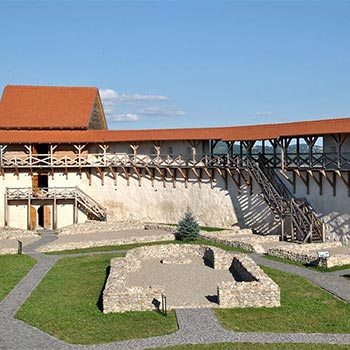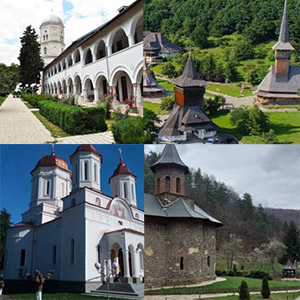Our UiR database: search results for „Churches”

Tartlau Fortified Church (Prejmer) | Romania tour in 1,000 pictures
(19 November 2025)
X

(19 November 2025)
The fortified church of Tartlau, in the commune of Prejmer, Brasov County, has the most powerful ring wall of all the Saxon fortified churches in Transylvania. The oldest fortification ring is said to have been built before 1300 and was expanded at the end of the 15th and the beginning of the 16th century.
In its present form, the walls still stand 12 to 14 meters high and up to 5 meters thick at the base. Inside the fortress are over 270 refuge and storage chambers, arranged on up to four levels.
We thank Tom & Helga for these beautiful pictures from their Romania tour in September and October 2024. Many thanks 🥰
In its present form, the walls still stand 12 to 14 meters high and up to 5 meters thick at the base. Inside the fortress are over 270 refuge and storage chambers, arranged on up to four levels.
We thank Tom & Helga for these beautiful pictures from their Romania tour in September and October 2024. Many thanks 🥰

Pension Kokel & Bistroteca / Restaurant Baum | Sibiu County
(11 November 2025)
X

(11 November 2025)
Between Schäßburg (Sighisoara) and Medias lies the town of Dumbrăveni, the ideal starting point to discover the “treasures of Transylvania.” Fortified churches, medieval castles, picturesque hiking trails and unforgettable cultural events.
https://pensionkokel.ro | https://bistrotecabaum.ro
At Pension Kokel you will find a true oasis of Transylvanian calm and the warmth of a family atmosphere, where traditional charm harmoniously blends with modern comfort. The guesthouse offers 12 luxurious rooms, lovingly furnished for comfort and relaxation — perfect for guests seeking peace and privacy in an elegant setting.
The house also features a breakfast room, a restaurant, a bar, a terrace, a SPA area, a fitness room, a children's Playground and private parking.
And if you want a tasty meal, be sure to visit the Bistroteca / Restaurant Baum.
https://pensionkokel.ro | https://bistrotecabaum.ro
At Pension Kokel you will find a true oasis of Transylvanian calm and the warmth of a family atmosphere, where traditional charm harmoniously blends with modern comfort. The guesthouse offers 12 luxurious rooms, lovingly furnished for comfort and relaxation — perfect for guests seeking peace and privacy in an elegant setting.
The house also features a breakfast room, a restaurant, a bar, a terrace, a SPA area, a fitness room, a children's Playground and private parking.
And if you want a tasty meal, be sure to visit the Bistroteca / Restaurant Baum.

Castles | Fortresses | Fortified churches in Romania
(10 November 2025)
X

(10 November 2025)
Fans of castles, fortresses, palaces, and everything related will get their money’s worth on a holiday in Romania 🥰
Hunedoara / Corvin Castle, Hunedoara County | Bran Castle / Törzburg, Brasov County | Peles and Pelisor Castles, Sinaia, Prahova County | Cantacuzino Castle, Busteni, Prahova County | Fortified church of Biertan / Birthälm, Sibiu County | Defensive walls of Sibiu / Hermannstadt | Rasnov / Rosenau Fortress, Brasov County | and many other places invite you to visit.
https://urlaub-in-rumänien.de/de/ausflugsziele-reiseziele-rumaenien-burgen-schloesser/
Hunedoara / Corvin Castle, Hunedoara County | Bran Castle / Törzburg, Brasov County | Peles and Pelisor Castles, Sinaia, Prahova County | Cantacuzino Castle, Busteni, Prahova County | Fortified church of Biertan / Birthälm, Sibiu County | Defensive walls of Sibiu / Hermannstadt | Rasnov / Rosenau Fortress, Brasov County | and many other places invite you to visit.
https://urlaub-in-rumänien.de/de/ausflugsziele-reiseziele-rumaenien-burgen-schloesser/

Travel journal Romania | Harman | Honigberg
(03 November 2025)
X

(03 November 2025)
We are following the Zitzmann family through Romania, who not only allowed us to use the photos from their trip (end of September 2023), but also to share their experiences and stories. Thank you 🥰
https://kronstadt-erleben.de | https://discover-brasov.com
"Romania, day 14, today is the day of the fortified churches in Transylvania, where there are and were many Saxon Germans. Fortified churches could shelter the inhabitants of entire villages during attacks. Each family received a small chamber. In one of the fortified churches, there were over 200 such chambers. There was also a school, weaving workshop, etc. inside, because the villages were often besieged for a long time... very interesting to see, at some fortified churches we were allowed to climb up to the tower on adventurous paths. Without any safety precautions, something that would be impossible in Austria. They just say: be careful, steep steps. 🙂 When you stand under a bell supported by rotten wooden beams, you better not think about it. Another day with many new impressions. 🙂"
Thanks to Gerhard and Daniela Zitzmann for the photos and text.
https://kronstadt-erleben.de | https://discover-brasov.com
"Romania, day 14, today is the day of the fortified churches in Transylvania, where there are and were many Saxon Germans. Fortified churches could shelter the inhabitants of entire villages during attacks. Each family received a small chamber. In one of the fortified churches, there were over 200 such chambers. There was also a school, weaving workshop, etc. inside, because the villages were often besieged for a long time... very interesting to see, at some fortified churches we were allowed to climb up to the tower on adventurous paths. Without any safety precautions, something that would be impossible in Austria. They just say: be careful, steep steps. 🙂 When you stand under a bell supported by rotten wooden beams, you better not think about it. Another day with many new impressions. 🙂"
Thanks to Gerhard and Daniela Zitzmann for the photos and text.
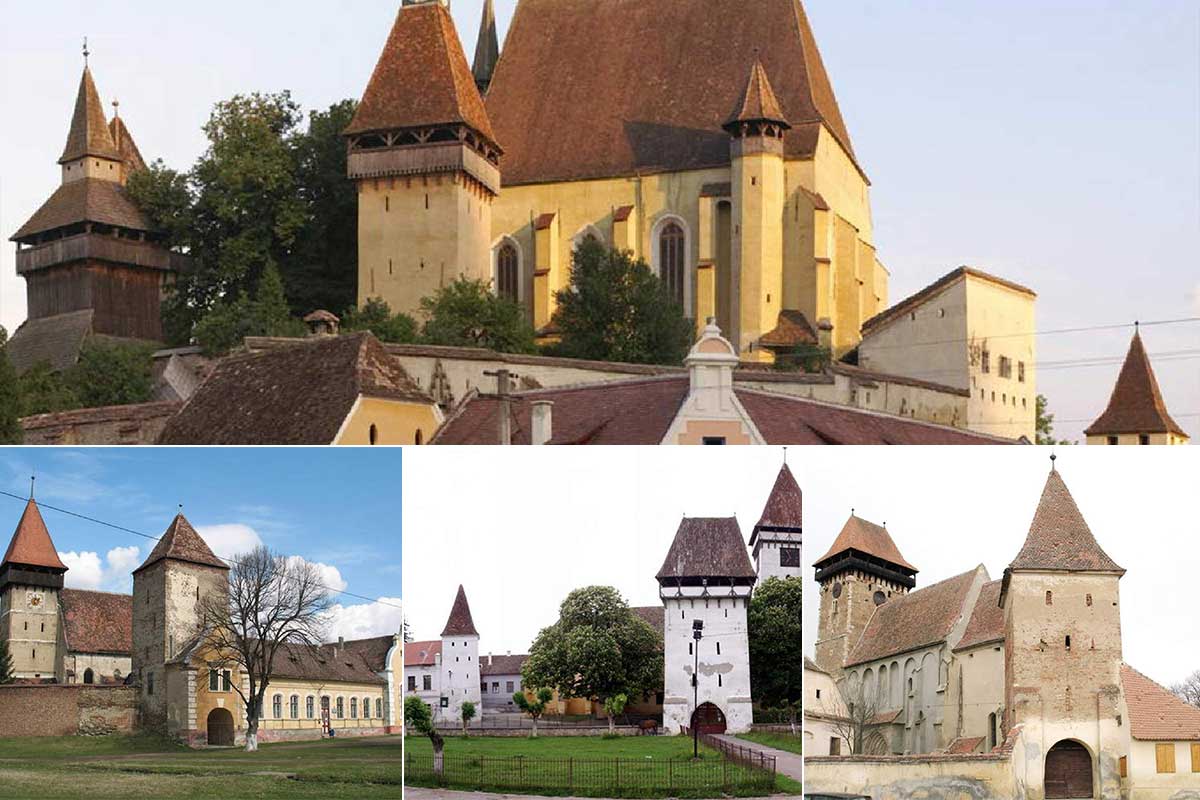
Fortified churches in Transylvania
(01 November 2025)
X

(01 November 2025)
Transylvania is rich in history and around 160 fortified churches invite interested visitors to take a journey through the past and present of the Transylvanian region.
An overview of all these fortified churches and much more information:
https://xn--urlaub-in-rumnien-2qb.de/de/uir/kirchenburgen/
We would like to thank the Fortified Churches Foundation (https://kirchenburgen.org) for permission to use the images and data.
An overview of all these fortified churches and much more information:
https://xn--urlaub-in-rumnien-2qb.de/de/uir/kirchenburgen/
We would like to thank the Fortified Churches Foundation (https://kirchenburgen.org) for permission to use the images and data.

Targoviste | Dambovita County
(28 October 2025)
X

(28 October 2025)
The city of Targoviste (in German Tergowiste or Tergowisch) is the county seat of Dambovita County and the former capital of the historical region of Wallachia.
The first known mention of the city was in 1396 by the Bavarian crusader Johannes Schiltberger.
In Targoviste, Vlad III Draculea was enthroned in 1456*. In 1499, the Wallachian ruler Radu cel Mare (Radu the Great) rebuilt the hill church of Saint Nicolae, but it was only in 1514, under the rule of Neagoe Basarab, that the church was consecrated. Today it is known as Dealu Monastery.
Prince Matei Basarab (1632–1654) restored the city wall, renovated the old churches, and built several new places of worship. Until 1659, Targoviste was the capital of Wallachia and remained a princely residence until 1714.
*Enthronement: a ceremony in which a new monarch is invested in office.
The first known mention of the city was in 1396 by the Bavarian crusader Johannes Schiltberger.
In Targoviste, Vlad III Draculea was enthroned in 1456*. In 1499, the Wallachian ruler Radu cel Mare (Radu the Great) rebuilt the hill church of Saint Nicolae, but it was only in 1514, under the rule of Neagoe Basarab, that the church was consecrated. Today it is known as Dealu Monastery.
Prince Matei Basarab (1632–1654) restored the city wall, renovated the old churches, and built several new places of worship. Until 1659, Targoviste was the capital of Wallachia and remained a princely residence until 1714.
*Enthronement: a ceremony in which a new monarch is invested in office.

Targoviste | Dambovita County
(04 October 2025)
X

(04 October 2025)
We are here, completely underestimated the city, and just have to say: it is 100% worth a visit!!!
The historic center is full of life at night, the wonderful and very large city park invites you to stay, and many historic buildings can be explored and experienced. One day is not enough, and just one evening is definitely not either 🥰
The city of Targoviste (in German Tergowiste or Tergowisch) is the county seat of Dambovita County and the former capital of the historical region of Wallachia. The first known mention of the city was in 1396 by the Bavarian crusader Johannes Schiltberger.
In Targoviste, Vlad III Draculea was enthroned in 1456*. In 1499, the Wallachian prince Radu cel Mare (Radu the Great) rebuilt the hill church of Saint Nicolae, but it was only in 1514, under the rule of Prince Neagoe Basarab, that the church was consecrated. Today it is known as Dealu Monastery.
Prince Matei Basarab (1632–1654) restored the city wall, renovated the old churches, and built several new places of worship. Until 1659, Targoviste was the capital of Wallachia and remained a princely residence until 1714.
Pictures: July 2025
The historic center is full of life at night, the wonderful and very large city park invites you to stay, and many historic buildings can be explored and experienced. One day is not enough, and just one evening is definitely not either 🥰
The city of Targoviste (in German Tergowiste or Tergowisch) is the county seat of Dambovita County and the former capital of the historical region of Wallachia. The first known mention of the city was in 1396 by the Bavarian crusader Johannes Schiltberger.
In Targoviste, Vlad III Draculea was enthroned in 1456*. In 1499, the Wallachian prince Radu cel Mare (Radu the Great) rebuilt the hill church of Saint Nicolae, but it was only in 1514, under the rule of Prince Neagoe Basarab, that the church was consecrated. Today it is known as Dealu Monastery.
Prince Matei Basarab (1632–1654) restored the city wall, renovated the old churches, and built several new places of worship. Until 1659, Targoviste was the capital of Wallachia and remained a princely residence until 1714.
Pictures: July 2025

Fairytale images of the forest of Craiului | Apuseni Mountains
(30 September 2025)
X

(30 September 2025)
Dense and untouched forests, narrow gorges and steep valleys, caves, hundreds of kilometers of marked trails, churches, waterfalls, tradition & local specialties, and so much more.
When you see the first picture, you might think it’s Bavaria... or Austria!? But it’s Romania! It’s the Padurea Craiului (Forest of Rocks) in the Apuseni Mountains*.
*The Apuseni Mountains are a mountain formation in western Romania. They reach peak heights of 1,100 to 1,800 meters and form the northern section of the Western Romanian Carpathians.
Images / Text: https://destinatiaanului.ro
When you see the first picture, you might think it’s Bavaria... or Austria!? But it’s Romania! It’s the Padurea Craiului (Forest of Rocks) in the Apuseni Mountains*.
*The Apuseni Mountains are a mountain formation in western Romania. They reach peak heights of 1,100 to 1,800 meters and form the northern section of the Western Romanian Carpathians.
Images / Text: https://destinatiaanului.ro

Fortified churches in Transylvania | Pretai
(09 August 2025)
X

(09 August 2025)
There are approximately 180 fortified churches in the Transylvania region; one of them is Pretai / Brateiu.
Only a few remains of the 14th‑century Gothic basilica survive today. The present church bears characteristics of the 15th century. The church interior was significantly altered by removing the southern row of pillars, raising the exterior walls, and installing a barrel vault. Particularly notable are the pillars between the north and central nave, which feature profiled cross‑sections and capitals with figurative depictions.
On the route through the Vale of the Great Kokel (Târnava Mare), a few kilometres east of Mediaș, the fortified church of Brateiu appears. It is located in the middle of the village at the village entrance.
Learn more about this fortified church:
https://kirchenburgen.org/location/pretai-brateiu/
Overview of fortified churches in Transylvania:
https://urlaub-in-rumänien.de/de/uir/kirchenburgen/
Only a few remains of the 14th‑century Gothic basilica survive today. The present church bears characteristics of the 15th century. The church interior was significantly altered by removing the southern row of pillars, raising the exterior walls, and installing a barrel vault. Particularly notable are the pillars between the north and central nave, which feature profiled cross‑sections and capitals with figurative depictions.
On the route through the Vale of the Great Kokel (Târnava Mare), a few kilometres east of Mediaș, the fortified church of Brateiu appears. It is located in the middle of the village at the village entrance.
Learn more about this fortified church:
https://kirchenburgen.org/location/pretai-brateiu/
Overview of fortified churches in Transylvania:
https://urlaub-in-rumänien.de/de/uir/kirchenburgen/

Galați | city on the Danube and the Danube Delta
(06 August 2025)
X

(06 August 2025)
Galati is the capital of the district of the same name in Moldova, in southeastern Romania.
It was visited by royal families and was one of the richest cities in Romania. Today it is a well-known port city, near Brăila and it is definitely worth a visit.
https://welcome-to-romania.com | https://urlaub-in-rumänien.de
In addition to the botanical garden, the zoo, many parks and museums, churches and much more, approx. The 2 1/2 km long promenade on the waterfront, a wonderful view over and to the Danube, which in some places reaches a width of up to 900 meters.
We thank the photographer Florin Mocanu for the permission to use these images.
It was visited by royal families and was one of the richest cities in Romania. Today it is a well-known port city, near Brăila and it is definitely worth a visit.
https://welcome-to-romania.com | https://urlaub-in-rumänien.de
In addition to the botanical garden, the zoo, many parks and museums, churches and much more, approx. The 2 1/2 km long promenade on the waterfront, a wonderful view over and to the Danube, which in some places reaches a width of up to 900 meters.
We thank the photographer Florin Mocanu for the permission to use these images.

Târgoviște | Dâmbovița County
(28 July 2025)
X

(28 July 2025)
The historic city center is full of life at night. The wonderful, very large city park invites visitors to linger, and many historic buildings can be explored and experienced. One day is not enough, and certainly not just one evening 🥰
The town of Târgoviște (German: Tergowiste or Tergowisch) is the county seat of Dâmbovița County and the former capital of the historical region Greater Wallachia. The first known mention of the town dates to 1396 and comes from the Bavarian crusader Johannes Schiltberger. In Târgoviște, Vlad III. Drăculea was enthroned in 1456. In 1499 the Wallachian prince Radu cel Mare (Radu the Great) rebuilt the Hill Church of Saint Nicholas, but it was not consecrated until 1514 under the rule of Prince Neagoe Basarab. Today it is known as Dealu Monastery.
Prince Matei Basarab (1632–1654) repaired the city walls, renovated the old churches, and built several new houses of worship. Until 1659 Târgoviște was the capital of Wallachia and remained a princely residence until 1714.
*Enthronement: ceremony in which a new monarch is installed into office.*
Photos: 15 July 2025
The town of Târgoviște (German: Tergowiste or Tergowisch) is the county seat of Dâmbovița County and the former capital of the historical region Greater Wallachia. The first known mention of the town dates to 1396 and comes from the Bavarian crusader Johannes Schiltberger. In Târgoviște, Vlad III. Drăculea was enthroned in 1456. In 1499 the Wallachian prince Radu cel Mare (Radu the Great) rebuilt the Hill Church of Saint Nicholas, but it was not consecrated until 1514 under the rule of Prince Neagoe Basarab. Today it is known as Dealu Monastery.
Prince Matei Basarab (1632–1654) repaired the city walls, renovated the old churches, and built several new houses of worship. Until 1659 Târgoviște was the capital of Wallachia and remained a princely residence until 1714.
*Enthronement: ceremony in which a new monarch is installed into office.*
Photos: 15 July 2025
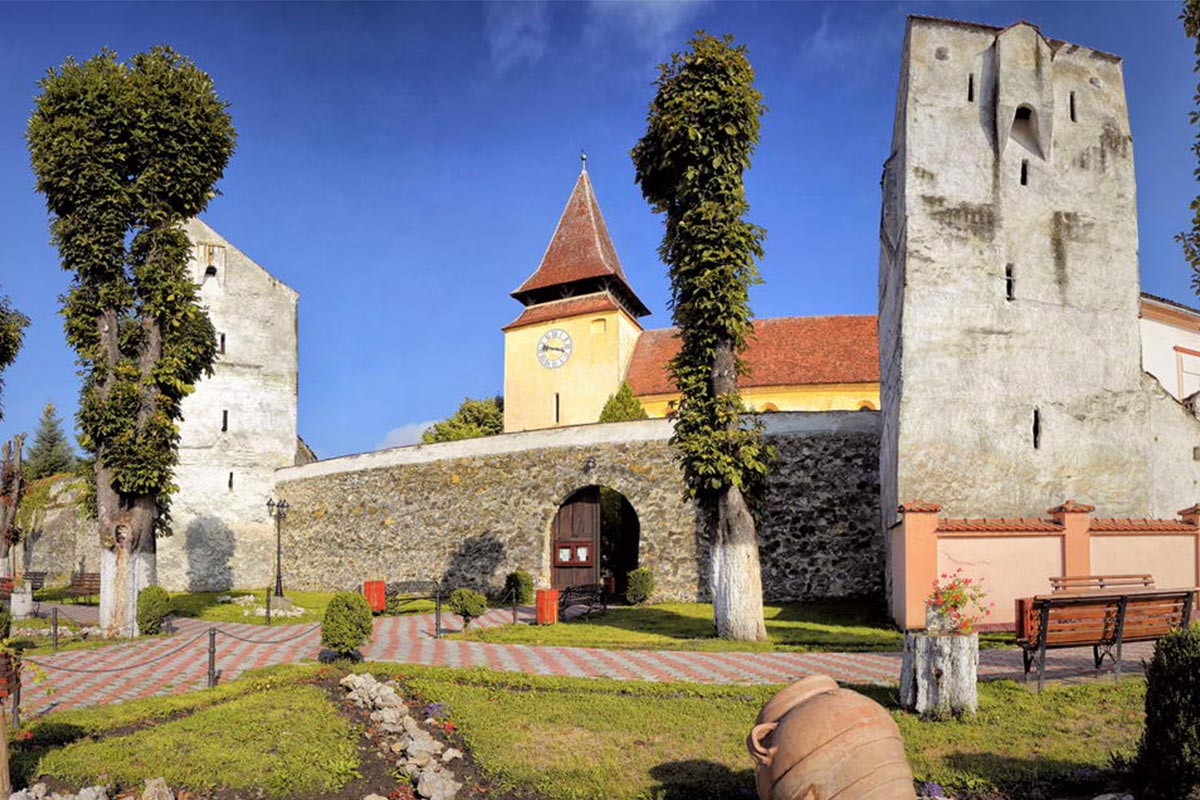
Fortified churches in Transylvania - Weidenbach | Brasov County
(20 June 2025)
X

(20 June 2025)
There are over 160 fortified churches in the region of Transylvania, one of which is Weidenbach / Ghimbav.
The settlement was founded in the 13th century by the Teutonic Order in the 15th century. by rebuilding a Romanesque predecessor building a Gothic basilica. During the fortification with a ring and five defense towers, a canine and a pit were later built, and the church tower was equipped with gaps. After the destruction of 1658, the church was rebuilt in its old form, but the nave vault was not built until 1775. From the Gothic construction phase, in addition to the composition of the floor plan of...
Learn more about this fortified church:
https://kirchenburgen.org/location/weidenbach-ghimbav/
Overview of all 160 fortified churches:
https://urlaub-in-rumänien.de/en/uir/fortified-churches/
The settlement was founded in the 13th century by the Teutonic Order in the 15th century. by rebuilding a Romanesque predecessor building a Gothic basilica. During the fortification with a ring and five defense towers, a canine and a pit were later built, and the church tower was equipped with gaps. After the destruction of 1658, the church was rebuilt in its old form, but the nave vault was not built until 1775. From the Gothic construction phase, in addition to the composition of the floor plan of...
Learn more about this fortified church:
https://kirchenburgen.org/location/weidenbach-ghimbav/
Overview of all 160 fortified churches:
https://urlaub-in-rumänien.de/en/uir/fortified-churches/

Laslau Mic / Kleinlasseln | Mures County
(17 June 2025)
X

(17 June 2025)
The village of Kleinlasseln (Laslau Mic in Romanian) is located in the district of Muresch (Mures) and is a typical (former) Saxon village in southern Transylvania.
The old Protestant village churches mostly still offer small, hidden treasures. Only a few Germans still live in the village.
We would like to thank Mr. Frank Schleßmann for sending us these beautiful pictures and the corresponding text/explanation.
The old Protestant village churches mostly still offer small, hidden treasures. Only a few Germans still live in the village.
We would like to thank Mr. Frank Schleßmann for sending us these beautiful pictures and the corresponding text/explanation.
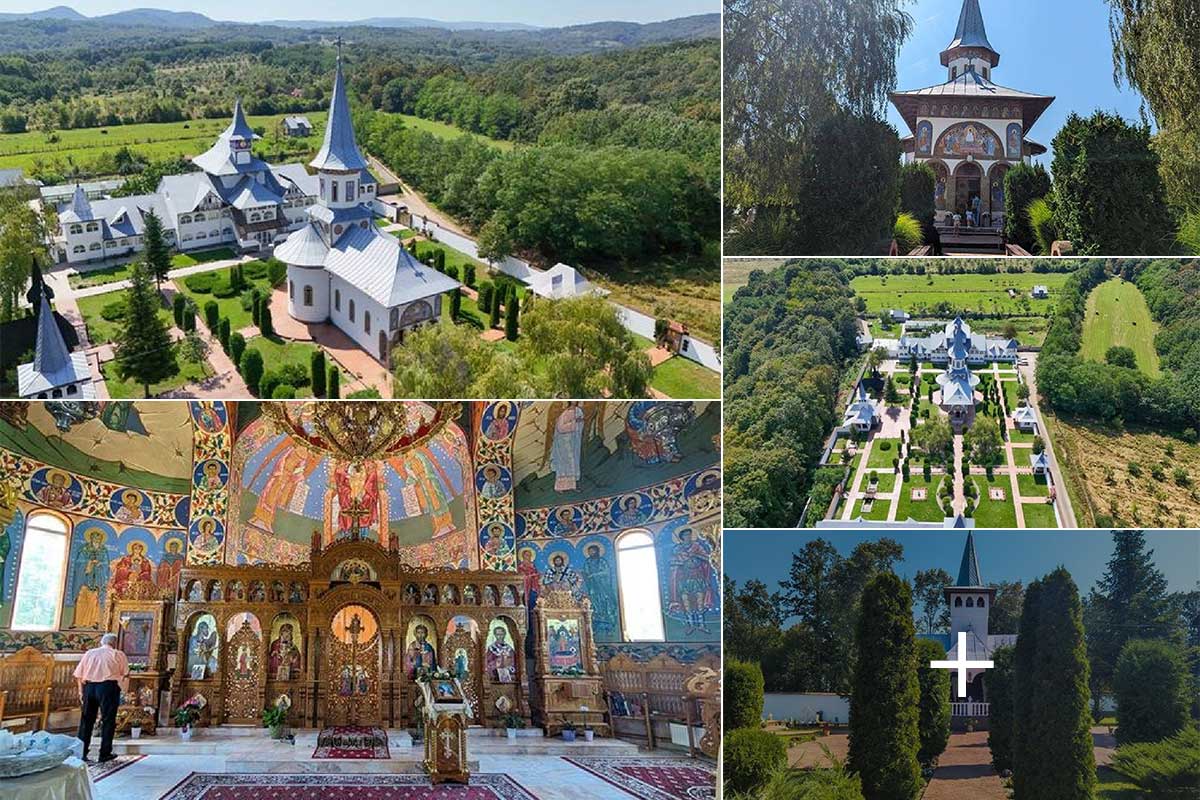
Manastirea (Monastery) Teius | Caransebes | Caras-Severin County
(08 June 2025)
X

(08 June 2025)
The Teiuș Monastery in Caraș-Severin County was built in 1999. It includes several small churches surrounded by an impressive garden with roses and trees.
We thank Banatul Montan for the permission to use these images.
We thank Banatul Montan for the permission to use these images.

Holiday destinations 2025: castles, palaces, and more in Romania
(22 May 2025)
X

(22 May 2025)
Romania is rich in history and therefore also rich in the corresponding buildings and many stories about them.
There are still around 180 fortified churches in Transylvania (Siebenbürgen) alone, as well as fortresses, palaces, many castles, and also a large number of ruins.
https://welcome-to-romania.com | https://urlaub-in-rumänien.de
We thank the photographers / Facebook groups of the pictures for allowing us to use them.
There are still around 180 fortified churches in Transylvania (Siebenbürgen) alone, as well as fortresses, palaces, many castles, and also a large number of ruins.
https://welcome-to-romania.com | https://urlaub-in-rumänien.de
We thank the photographers / Facebook groups of the pictures for allowing us to use them.
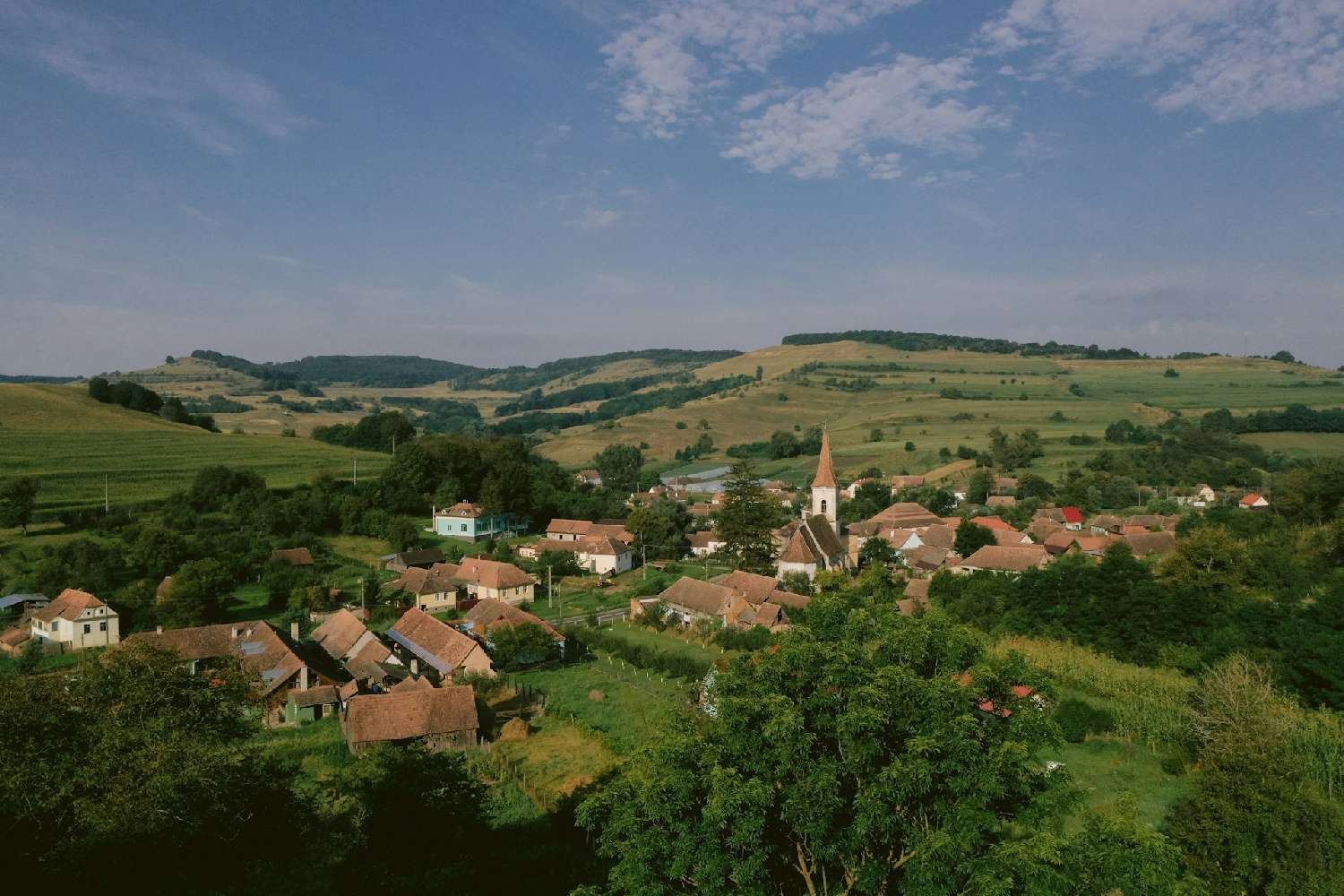
Cund | Mures County | Transylvania
(14 May 2025)
X

(14 May 2025)
About 30 kilometres from Sighisoara and 30 kilometres from Medias lies the village of Cund in the county of Mures.
The former name of the village, part of the Bahneawar commune, was Cundu (Saxon Reisdref, German Reußdorf, Reussdorf, Reisdorf, Kunden, Hungarian Kund). The village, like several hundred other villages in Transylvania, is based on a fortified church (Kirchenburg) in the centre of the village.
https://urlaub-in-rumänien.de/en/uir/fortified-churches/
The former name of the village, part of the Bahneawar commune, was Cundu (Saxon Reisdref, German Reußdorf, Reussdorf, Reisdorf, Kunden, Hungarian Kund). The village, like several hundred other villages in Transylvania, is based on a fortified church (Kirchenburg) in the centre of the village.
https://urlaub-in-rumänien.de/en/uir/fortified-churches/
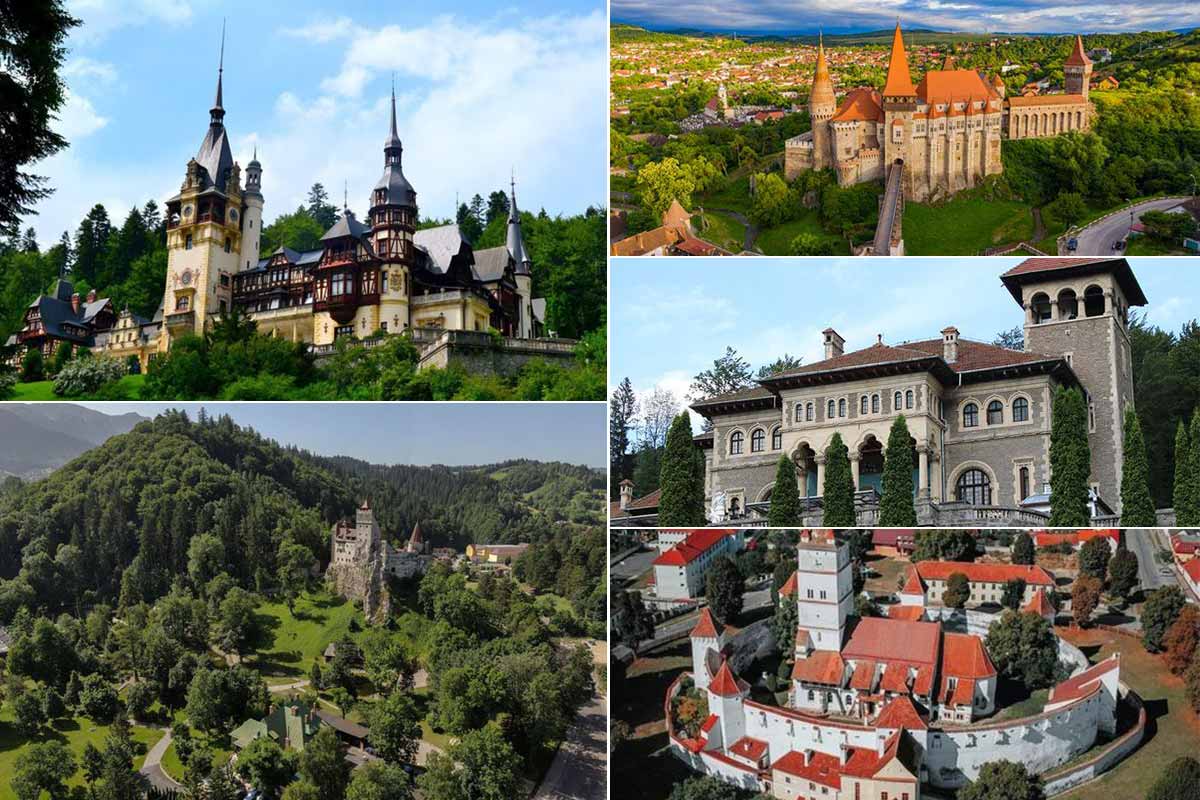
Holiday destinations 2025: castles, palaces, and more in Romania (1/2)
(11 May 2025)
X

(11 May 2025)
Romania is rich in history and therefore ... just as rich in the corresponding buildings and many stories.
There are still 180 fortified churches in Transylvania alone, as well as fortresses, castles, many fortresses and ruins in large numbers.
https://xn--willkommen-in-rumnien-m2b.de/ | https://xn--urlaub-in-rumnien-2qb.de/
We thank the photographers / Facebook groups of the pictures for the permission to use them.
There are still 180 fortified churches in Transylvania alone, as well as fortresses, castles, many fortresses and ruins in large numbers.
https://xn--willkommen-in-rumnien-m2b.de/ | https://xn--urlaub-in-rumnien-2qb.de/
We thank the photographers / Facebook groups of the pictures for the permission to use them.

Holiday destinations 2025: castles, palaces, and more in Romania (2/2)
(11 May 2025)
X

(11 May 2025)
Romania is rich in history and therefore ... just as rich in the corresponding buildings and many stories.
There are still 180 fortified churches in Transylvania alone, as well as fortresses, castles, many fortresses and ruins in large numbers.
https://xn--willkommen-in-rumnien-m2b.de/ | https://xn--urlaub-in-rumnien-2qb.de/
We thank the photographers / Facebook groups of the pictures for the permission to use them.
There are still 180 fortified churches in Transylvania alone, as well as fortresses, castles, many fortresses and ruins in large numbers.
https://xn--willkommen-in-rumnien-m2b.de/ | https://xn--urlaub-in-rumnien-2qb.de/
We thank the photographers / Facebook groups of the pictures for the permission to use them.

Vinga | Arad county | Banat
(05 May 2025)
X

(05 May 2025)
If you travel on the road (E671) from Timisoara to Arad, you will pass the commune of Vinga (Theresiopolis in German) about 25 km before Arad.
The two churches are very large for such a small community. The Orthodox Church (Orthodox Church, on the left in the picture) and the Roman Catholic Church (Catholic Church, on the right in the picture and in other pictures).
The first documentary mention of Vinga dates back to 1231. After being sacked and destroyed by the Turks, Vinga was resettled in 1737 and 1741 by about 125 families of "Bulgarian-Bavarians" from Cyprovts in western Bulgaria, who crossed the Danube and settled in various parts of the Banat Plain. On 1 August 1744, Vinga was granted the status of a town with a magistrate and various privileges by Empress Maria Theresa of Austria.
Images: End of July 2023
The two churches are very large for such a small community. The Orthodox Church (Orthodox Church, on the left in the picture) and the Roman Catholic Church (Catholic Church, on the right in the picture and in other pictures).
The first documentary mention of Vinga dates back to 1231. After being sacked and destroyed by the Turks, Vinga was resettled in 1737 and 1741 by about 125 families of "Bulgarian-Bavarians" from Cyprovts in western Bulgaria, who crossed the Danube and settled in various parts of the Banat Plain. On 1 August 1744, Vinga was granted the status of a town with a magistrate and various privileges by Empress Maria Theresa of Austria.
Images: End of July 2023
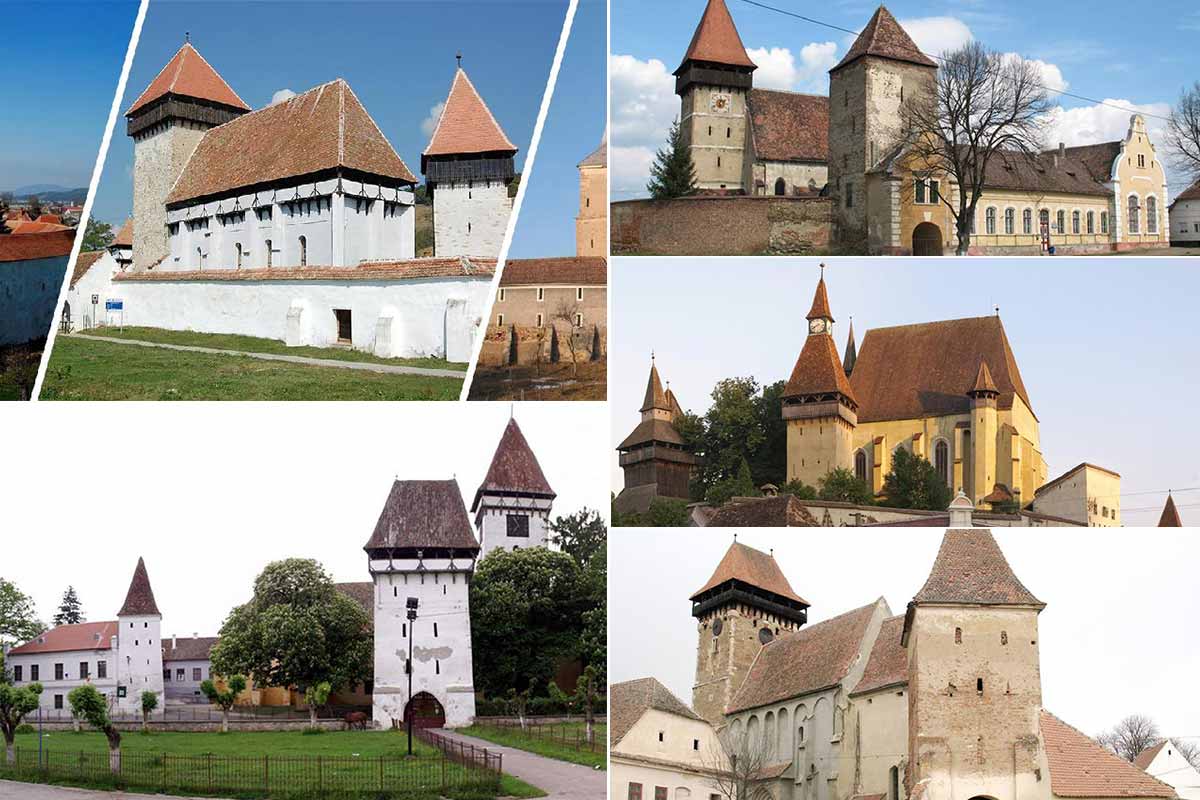
Fortified churches in Transylvania
(14 April 2025)
X

(14 April 2025)
Transylvania is rich in history, and around 160 fortified churches invite interested visitors to take a journey through Transylvania's past and present.
An overview of all these fortified churches and much more information:
https://xn--urlaub-in-rumnien-2qb.de/de/uir/kirchenburgen/
We thank the Fortified Churches Foundation (https://kirchenburgen.org) for the permission to use the images and data.
An overview of all these fortified churches and much more information:
https://xn--urlaub-in-rumnien-2qb.de/de/uir/kirchenburgen/
We thank the Fortified Churches Foundation (https://kirchenburgen.org) for the permission to use the images and data.

Holiday destinations: Castles, fortresses, and more in Romania
(02 April 2025)
X

(02 April 2025)
Romania is rich in history and therefore ... just as rich in the corresponding buildings and many stories.
There are still 300 fortified churches in Transylvania alone, as well as fortresses, castles, many fortresses and ruins in large numbers.
https://xn--willkommen-in-rumnien-m2b.de/ | https://xn--urlaub-in-rumnien-2qb.de/
We thank the photographers / Facebook groups of the pictures for the permission to use them.
There are still 300 fortified churches in Transylvania alone, as well as fortresses, castles, many fortresses and ruins in large numbers.
https://xn--willkommen-in-rumnien-m2b.de/ | https://xn--urlaub-in-rumnien-2qb.de/
We thank the photographers / Facebook groups of the pictures for the permission to use them.
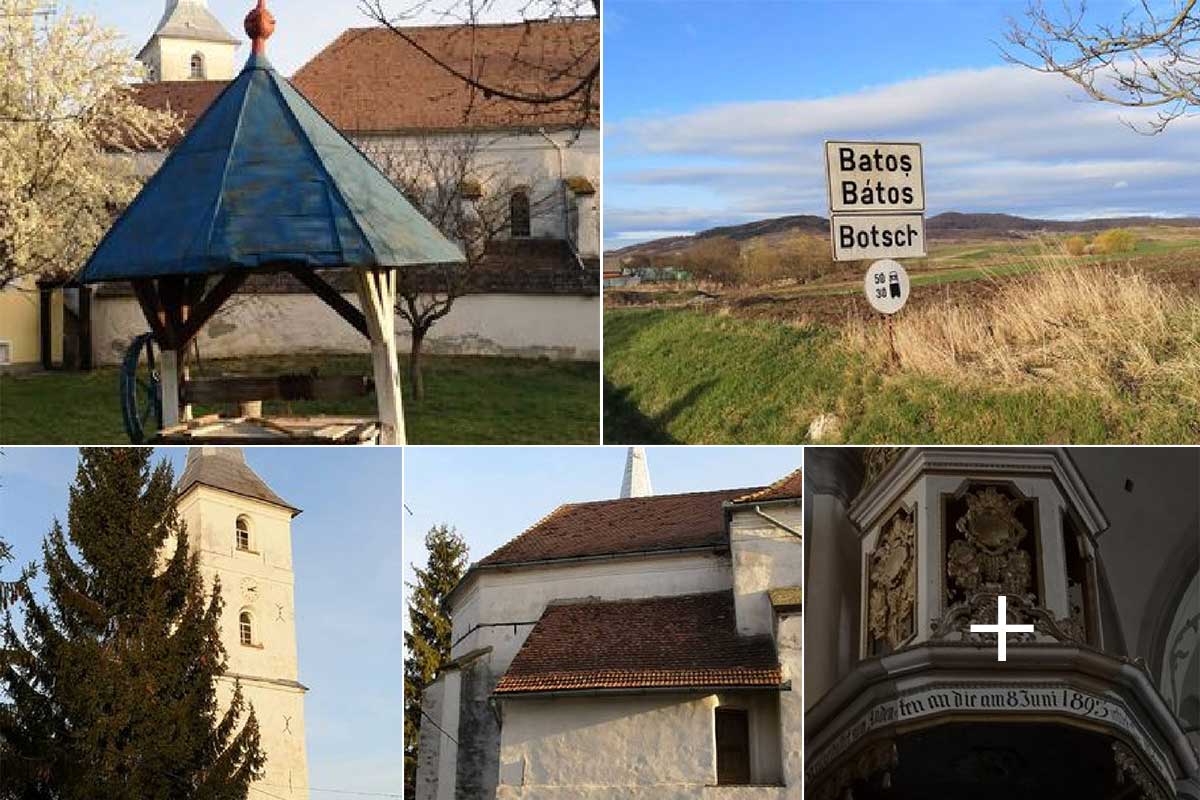
Batos (in German Botsch) | Mures County
(27 March 2025)
X

(27 March 2025)
Botsch, Romanian Batos Hungarian Batos is one of seven German villages in the so-called "Reener Ländchen" near the town of Sächsisch Regen, Romanian Regin, Hungarian Szaszregen.
In autumn 1944, all the Germans in the area were forced to flee westwards. Some returned in 1945. Resettlement to Germany began in the 1970s. Today, there are still intact Protestant congregations in all of these seven villages and in the town of Sächsisch Regen, which celebrate their services in German. All the churches have been renovated and are well worth a visit.
We would like to thank Mr Frank Schleßmann for sending us these wonderful pictures and the corresponding text/explanation.
In autumn 1944, all the Germans in the area were forced to flee westwards. Some returned in 1945. Resettlement to Germany began in the 1970s. Today, there are still intact Protestant congregations in all of these seven villages and in the town of Sächsisch Regen, which celebrate their services in German. All the churches have been renovated and are well worth a visit.
We would like to thank Mr Frank Schleßmann for sending us these wonderful pictures and the corresponding text/explanation.
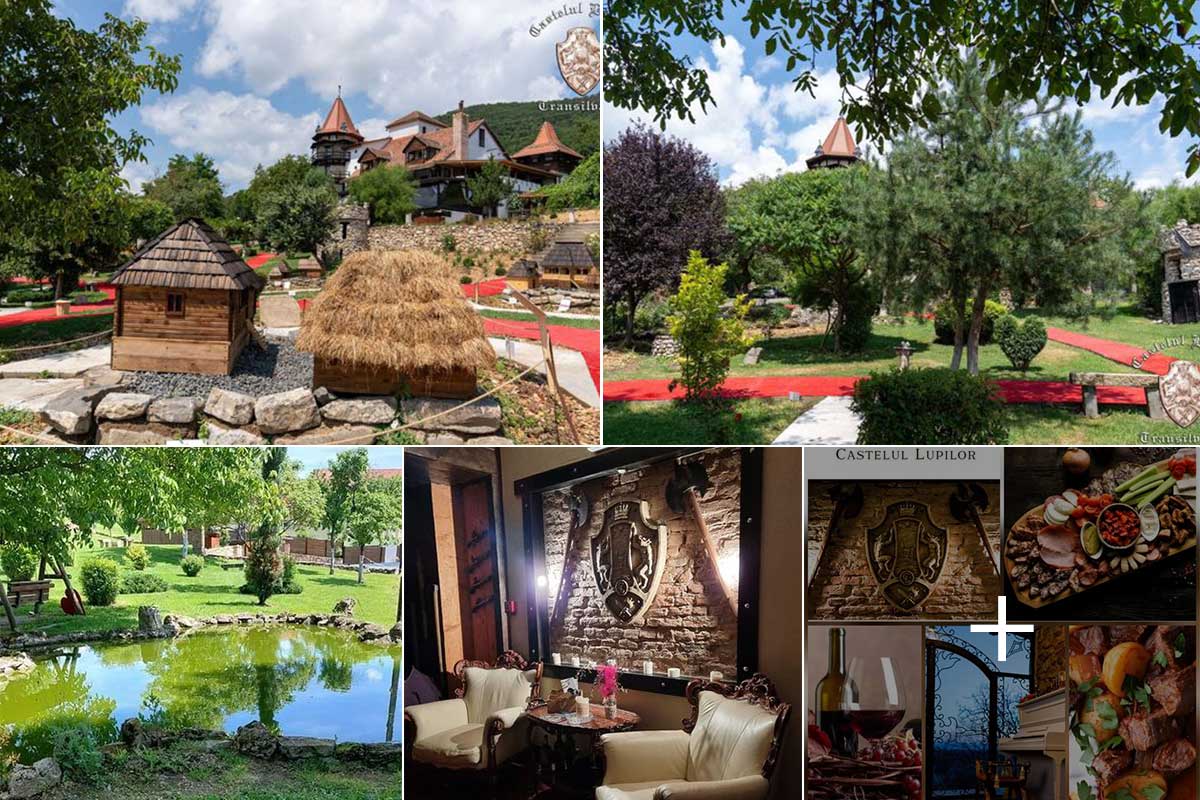
Castle of Wolves Transylvania | Hunedoara county
(14 March 2025)
X

(14 March 2025)
The Castle of the Transylvanian Wolves is located in Chimindina (Hunedoara county), just 15 minutes from Deva.
"In the distant past, the Castle of the Wolves of Chimindia was the place where the Great White Wolf gathered the wolves of Dacia to plan support in the Dacian-Roman war. Rooted in medieval history and used as a military base by Austria-Hungary, the castle combines historic architecture with the beauty of nature, offering an oasis of tranquillity.
The 15,000-square-metre courtyard is illuminated by miniatures of traditional households and churches created by master builder Ion Rodoș, the only Romanian folk master in the Book of Records. The courtyard also offers a spacious play area, and the ticket price of 20 lei (€4) includes all activities for children."
Find out more: Castelul Lupilor Transilvania
"In the distant past, the Castle of the Wolves of Chimindia was the place where the Great White Wolf gathered the wolves of Dacia to plan support in the Dacian-Roman war. Rooted in medieval history and used as a military base by Austria-Hungary, the castle combines historic architecture with the beauty of nature, offering an oasis of tranquillity.
The 15,000-square-metre courtyard is illuminated by miniatures of traditional households and churches created by master builder Ion Rodoș, the only Romanian folk master in the Book of Records. The courtyard also offers a spacious play area, and the ticket price of 20 lei (€4) includes all activities for children."
Find out more: Castelul Lupilor Transilvania
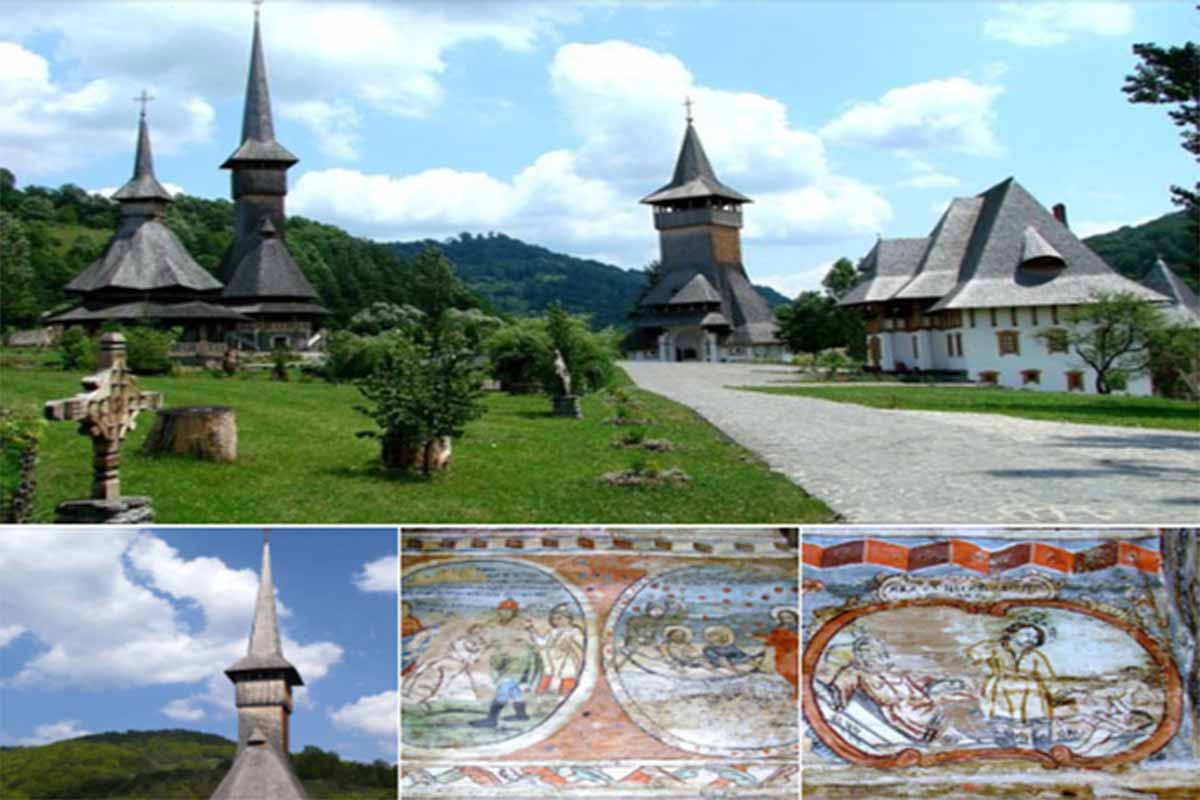
One of the highest wooden churches in Romania from Barsana
(07 March 2025)
X

(07 March 2025)
The village/municipality of Barsana (old spelling Birsana) is located in Maramures district.
Located in a beautiful landscape, Barsana has tourist attractions such as the wooden church "The Entrance of Our Lady from the Church" built around 1720 in the center of the town.
The Barsana Monastery, located on the south-eastern outskirts of the town, was first mentioned in 1390, but abandoned and abolished again in 1800. The buildings on the site today were rebuilt in wood at a later date. A Romanian Orthodox nunnery is located there today.
More information about the travel destination Romania: https://urlaub-in-rumänien.de/ro/
Images by Adam Jones Adam63 - Own Work, CC BY-SA 3.0, https://commons.wikimedia.org/w/index.php?curid=7326432 Oswald Engelhardt - Own Work, cc BY-SA 3.0, https://commons.wikimedia.org/w/index.php?curid=23823323 and Eetcu Mircea Rareș - Own Work, CC BY-SA 3.0.ro, https://commons.wikimedia.org/w/index.php?curid=814467
Located in a beautiful landscape, Barsana has tourist attractions such as the wooden church "The Entrance of Our Lady from the Church" built around 1720 in the center of the town.
The Barsana Monastery, located on the south-eastern outskirts of the town, was first mentioned in 1390, but abandoned and abolished again in 1800. The buildings on the site today were rebuilt in wood at a later date. A Romanian Orthodox nunnery is located there today.
More information about the travel destination Romania: https://urlaub-in-rumänien.de/ro/
Images by Adam Jones Adam63 - Own Work, CC BY-SA 3.0, https://commons.wikimedia.org/w/index.php?curid=7326432 Oswald Engelhardt - Own Work, cc BY-SA 3.0, https://commons.wikimedia.org/w/index.php?curid=23823323 and Eetcu Mircea Rareș - Own Work, CC BY-SA 3.0.ro, https://commons.wikimedia.org/w/index.php?curid=814467

Biertan | Village and Fortified Church | Sibiu County
(16 December 2024)
X

(16 December 2024)
A beautiful picture from Biertan. The Biertan village and fortified church (in German, Birthälm), first mentioned in historical records in 1283, is located in Sibiu County, Transylvania.
Learn more about fortified churches in Transylvania:
https://xn--urlaub-in-rumnien-2qb.de/de/uir/kirchenburgen/
Learn more about fortified churches in Transylvania:
https://xn--urlaub-in-rumnien-2qb.de/de/uir/kirchenburgen/

Biertan | Village and fortified church | Sibiu county
(19 November 2024)
X

(19 November 2024)
A beautiful picture from Biertan. The town and fortified church of Biertan (Biertan in German), first mentioned in a document from 1283, is located in the county of Sibiu in the Transylvania region.
Learn more about fortified churches in Transylvania:
https://xn--urlaub-in-rumnien-2qb.de/de/uir/kirchenburgen/
Learn more about fortified churches in Transylvania:
https://xn--urlaub-in-rumnien-2qb.de/de/uir/kirchenburgen/

Fortified Churches in Transylvania
(13 November 2024)
X

(13 November 2024)
Transylvania is rich in history, and around 200 fortified churches invite visitors to explore the past and present of the region.
An overview of all these churches and more information: https://urlaub-in-rumänien.de/en/uir/fortified-churches/
We thank the Fortified Churches Foundation ( https://kirchenburgen.org ) for permission to use the images and data.
An overview of all these churches and more information: https://urlaub-in-rumänien.de/en/uir/fortified-churches/
We thank the Fortified Churches Foundation ( https://kirchenburgen.org ) for permission to use the images and data.
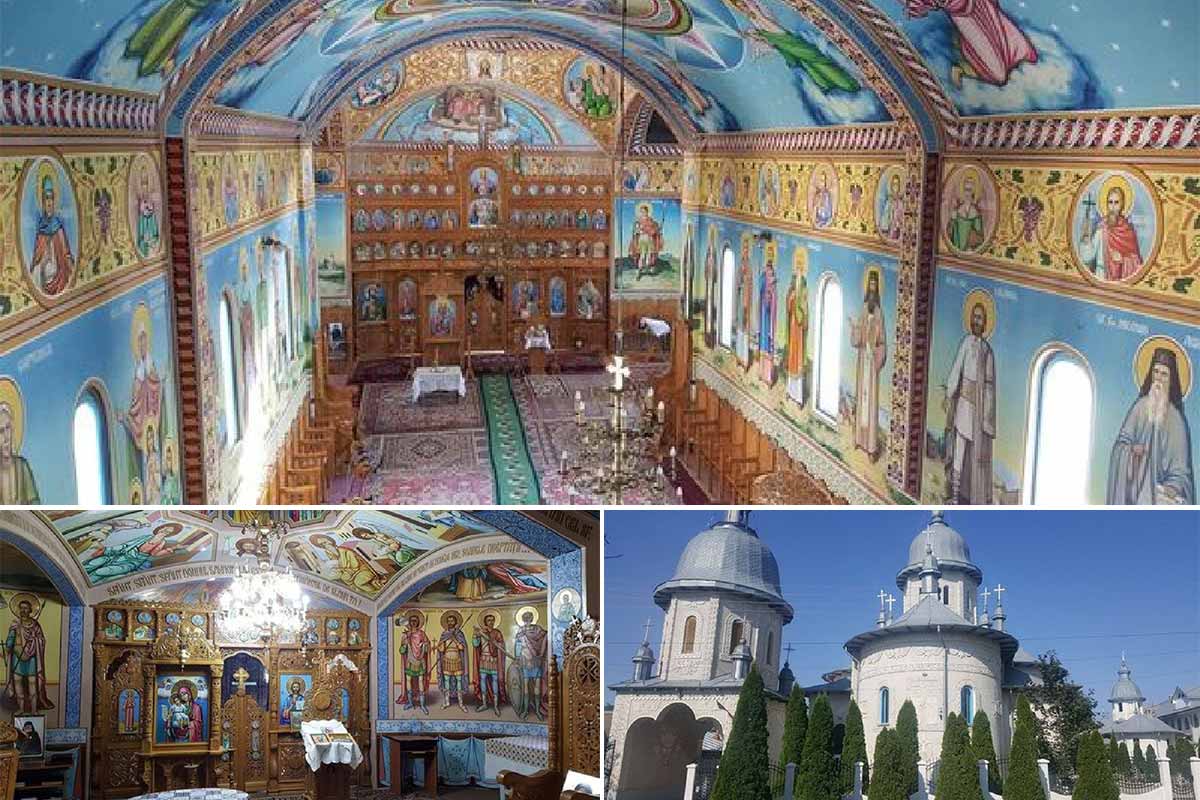
Church of the Annunciation | Galati County
(20 October 2024)
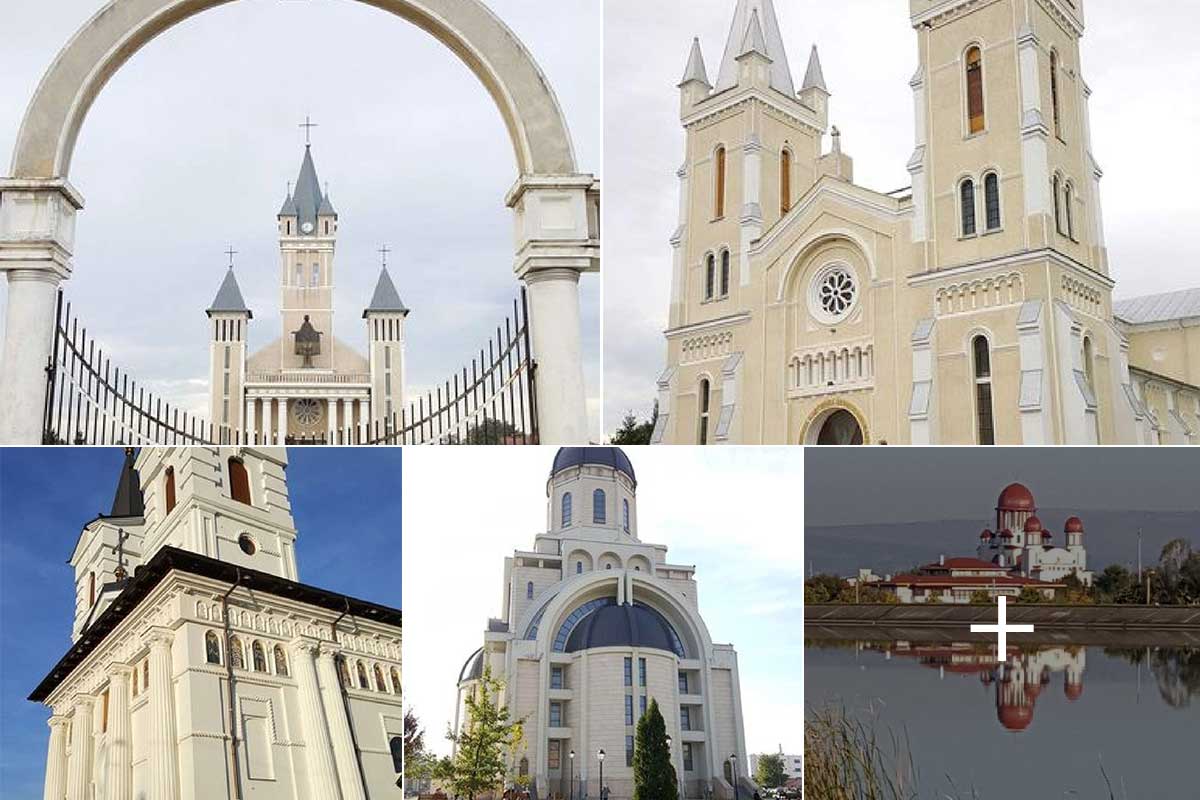
Churches over churches, from Bacău to Botoșani
(19 May 2024)
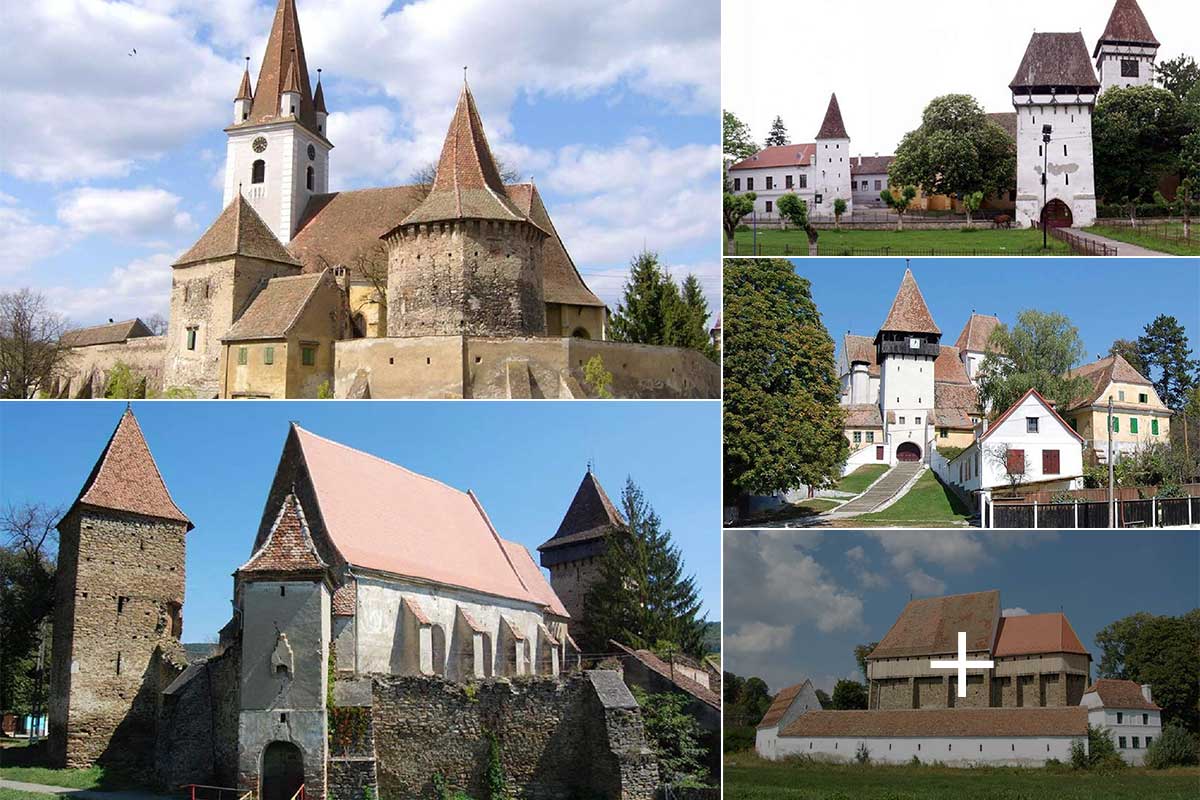
Fortified churches in Transylvania
(26 April 2024)
X

(26 April 2024)
Transylvania is famous for its more than 160 fortified churches, the history of which dates back to the Middle Ages. At that time, the region was a contested border area. The inhabitants reacted to the threats by fortifying their churches with defensive structures.
The fortifications were extended and rebuilt over the centuries. Many of them have been preserved to this day and form a unique landscape of fortified churches, which is characterized by its special density and diversity of these architectural monuments.
Find out more about the fortified churches:
https://deutschsprachiges-gastgewerbe-rumänien.de/kirchenburgen-in-siebenbuergen/
We would like to thank the Fortified Churches Foundation for permission to use these images.
The fortifications were extended and rebuilt over the centuries. Many of them have been preserved to this day and form a unique landscape of fortified churches, which is characterized by its special density and diversity of these architectural monuments.
Find out more about the fortified churches:
https://deutschsprachiges-gastgewerbe-rumänien.de/kirchenburgen-in-siebenbuergen/
We would like to thank the Fortified Churches Foundation for permission to use these images.
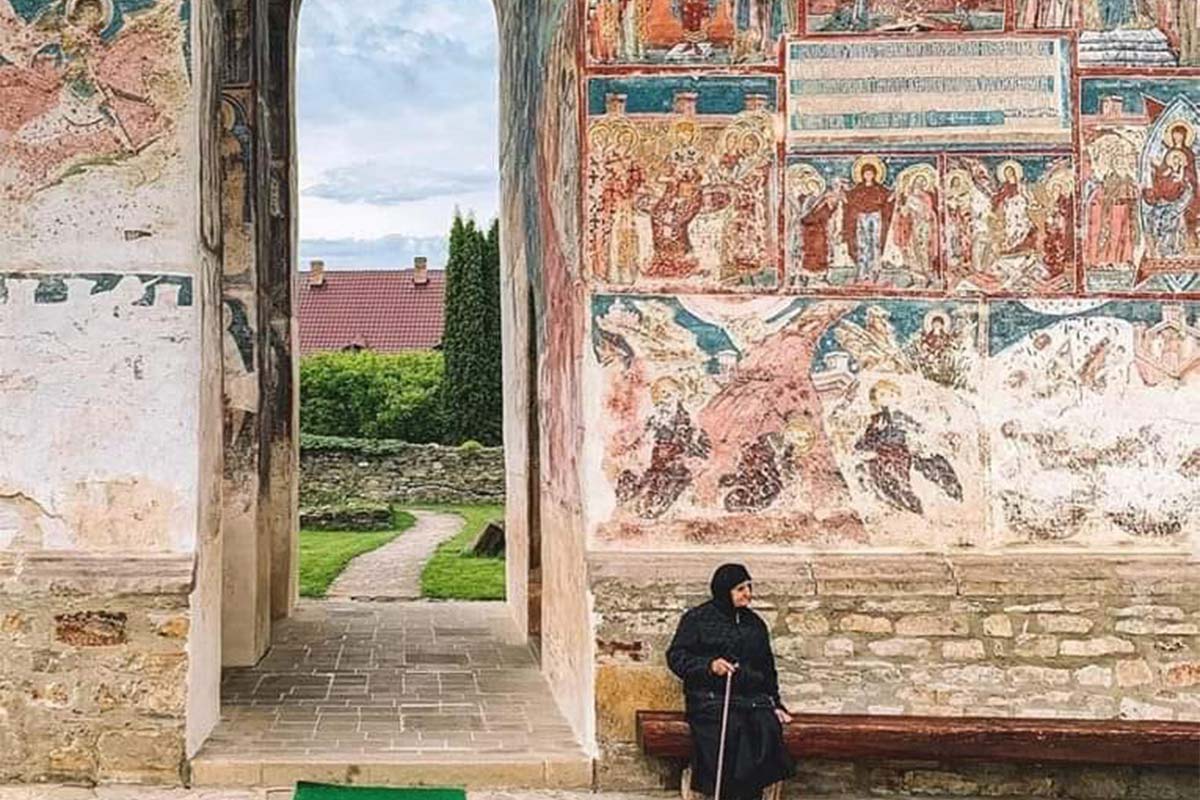
Humorului Monastery | Suceava County
(06 April 2024)
X

(06 April 2024)
Humorului Monastery is a Romanian Orthodox monastery and is located about 5 km north of Gura Humorului ( Suceava County ) in northeastern Romania.
The Church of the Monastery of the Assumption was included in the UNESCO World Heritage List in 1993 along with other churches in the Vltava River.
The Church of the Monastery of the Assumption was included in the UNESCO World Heritage List in 1993 along with other churches in the Vltava River.
We thank Vlad the Impaler - Dracula for the permission to use this image(s)
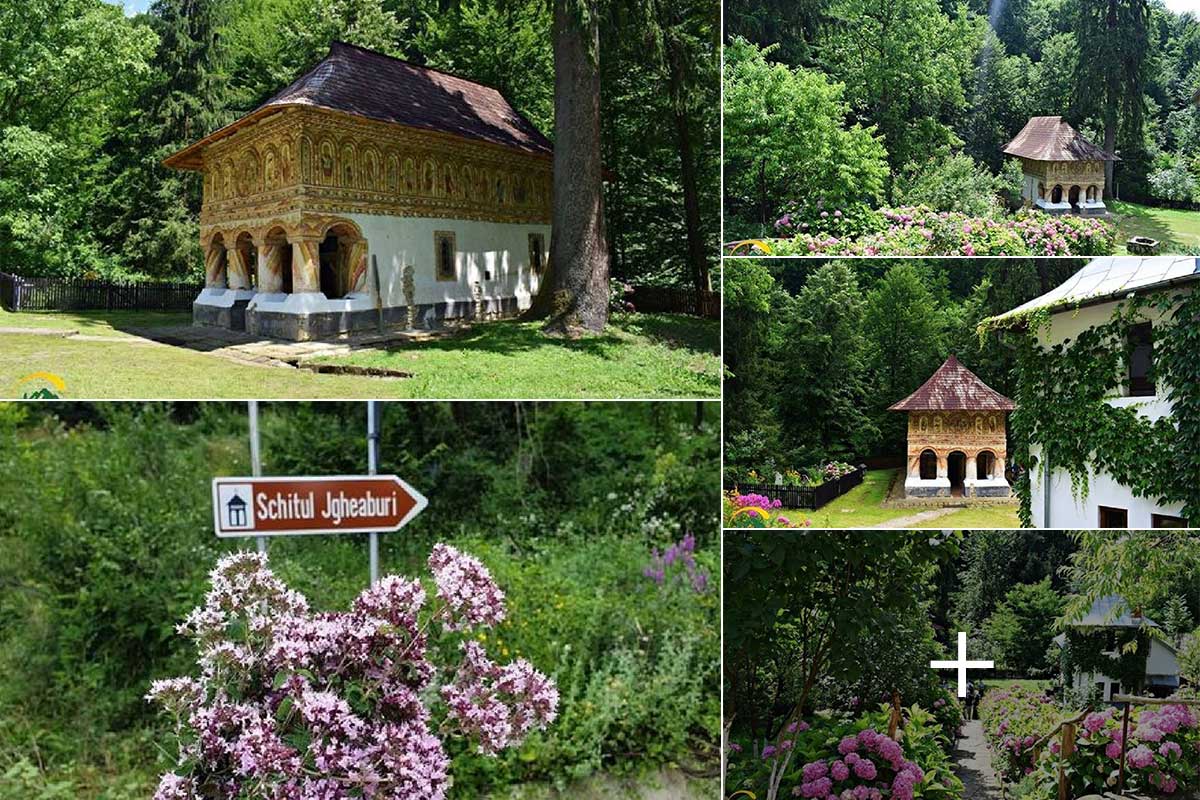
Church and Sulfur Sources "La Jgheburi"
(17 March 2024)
X

(17 March 2024)
The hermitage ( Hermitage / Ermitage ) Gutter ( in the village of Piscul Mare, Valcea County ) was built in a place with two wooden churches.
A church ( Radu Negru ) was built around 1300, the second church around 1600 and restored in 1640. In 1827, one of the churches, as it exists today, was rebuilt in stone and brick constructions.
This church is also visited for its sources of sulfur water, which has a positive effect on the body. The name of the sketch „ At the Gut ” was given by the locals based on these sources.
A church ( Radu Negru ) was built around 1300, the second church around 1600 and restored in 1640. In 1827, one of the churches, as it exists today, was rebuilt in stone and brick constructions.
This church is also visited for its sources of sulfur water, which has a positive effect on the body. The name of the sketch „ At the Gut ” was given by the locals based on these sources.
We thank Centrul National de Informare si Promovare Turistica Vâlcea for the permission to use this image(s)

Fortified Churches in Transylvania
(15 March 2024)
X

(15 March 2024)
Transylvania is famous for the large number of fortified churches, whose history dates back to the Middle Ages. At the time, the region was a contested borderland. Residents reacted to the threats by fortifying their churches with fortifications.
The facilities have been expanded and rebuilt over the centuries. Many of them have been preserved to this day and form a unique world-wide landscape of fortified churches, which is characterized by the great density and variety of these monuments.
Learn more about fortified churches:
https://xn--urlaub-in-rumnien-2qb.de/ro /uir/fortified-churches
At that time, the region was a contested border area. The inhabitants reacted to the threats by fortifying their churches with fortifications. Over the centuries, the fortifications were extended and rebuilt. Many of them have been preserved to this day and form a unique landscape of fortified churches, which is characterized by its special density and diversity of these monuments.
Thanks to the Fortified Churches Foundation for permission to use these images.
The facilities have been expanded and rebuilt over the centuries. Many of them have been preserved to this day and form a unique world-wide landscape of fortified churches, which is characterized by the great density and variety of these monuments.
Learn more about fortified churches:
https://xn--urlaub-in-rumnien-2qb.de/ro /uir/fortified-churches
At that time, the region was a contested border area. The inhabitants reacted to the threats by fortifying their churches with fortifications. Over the centuries, the fortifications were extended and rebuilt. Many of them have been preserved to this day and form a unique landscape of fortified churches, which is characterized by its special density and diversity of these monuments.
Thanks to the Fortified Churches Foundation for permission to use these images.
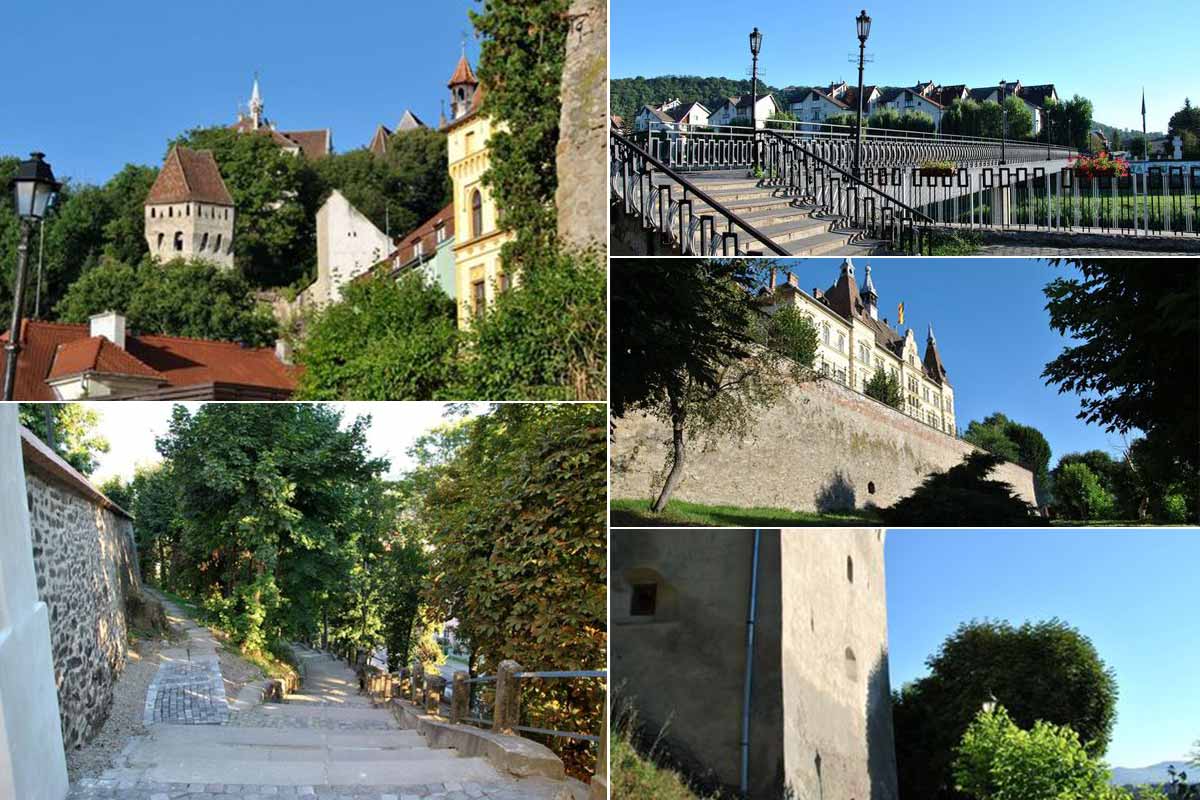
Sighisoara - beautiful and rich in history | Part 2/2
(13 February 2024)
X

(13 February 2024)
It takes many hours, if not days, to explore the city of Sighisoara ( in German Schäßburg ) in the district of Mureș.
You go over a lot of cobbles and sometimes you feel like you're not in Romania, but rather in an old town in Saxony ...
Schäßburg was founded in the second half of the 12th century by German immigrants, Transylvanian Saxons. In 1280 it was first mentioned as „ Sex Castrum ”, and in 1298 it was called Schespurch. Schaesbrich and mentioned in 1337 with the Hungarian name „ Seguzwar ”". In 1435, the Romanian name Sighisoara, borrowed from Hungarian, first appeared in writing.
The city has preserved its multicultural character to this day, and Schäßburg is again officially trilingual. City councils and tourist information are labeled in Romanian, German and Hungarian. There are kindergartens where German is spoken, as well as a primary school and a high school ( Bergschule Schäßburg ), where German is offered as a language of instruction. The mountain school allows the Abitur in German, which is also recognized by German universities. In addition, there are several Protestant churches and a lively community life in the city.
You go over a lot of cobbles and sometimes you feel like you're not in Romania, but rather in an old town in Saxony ...
Schäßburg was founded in the second half of the 12th century by German immigrants, Transylvanian Saxons. In 1280 it was first mentioned as „ Sex Castrum ”, and in 1298 it was called Schespurch. Schaesbrich and mentioned in 1337 with the Hungarian name „ Seguzwar ”". In 1435, the Romanian name Sighisoara, borrowed from Hungarian, first appeared in writing.
The city has preserved its multicultural character to this day, and Schäßburg is again officially trilingual. City councils and tourist information are labeled in Romanian, German and Hungarian. There are kindergartens where German is spoken, as well as a primary school and a high school ( Bergschule Schäßburg ), where German is offered as a language of instruction. The mountain school allows the Abitur in German, which is also recognized by German universities. In addition, there are several Protestant churches and a lively community life in the city.
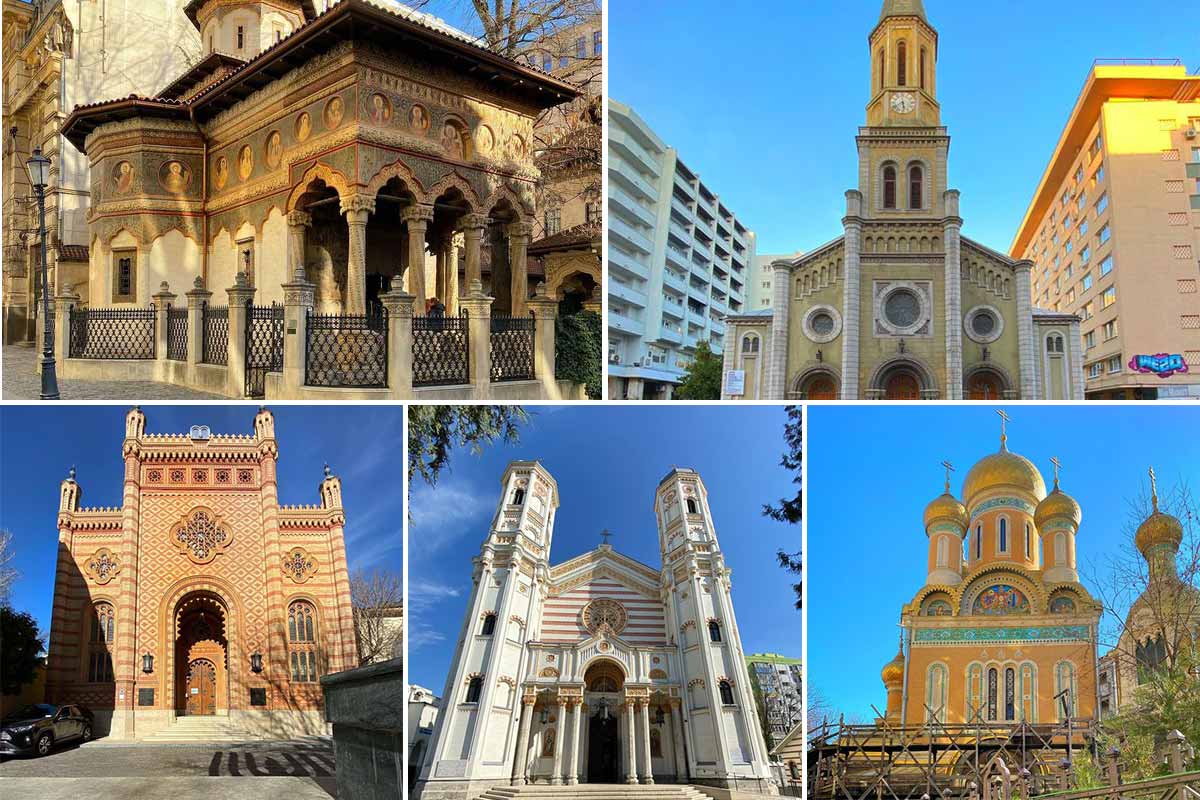
Bucharest | Capital of Romania | Churches
(20 January 2024)
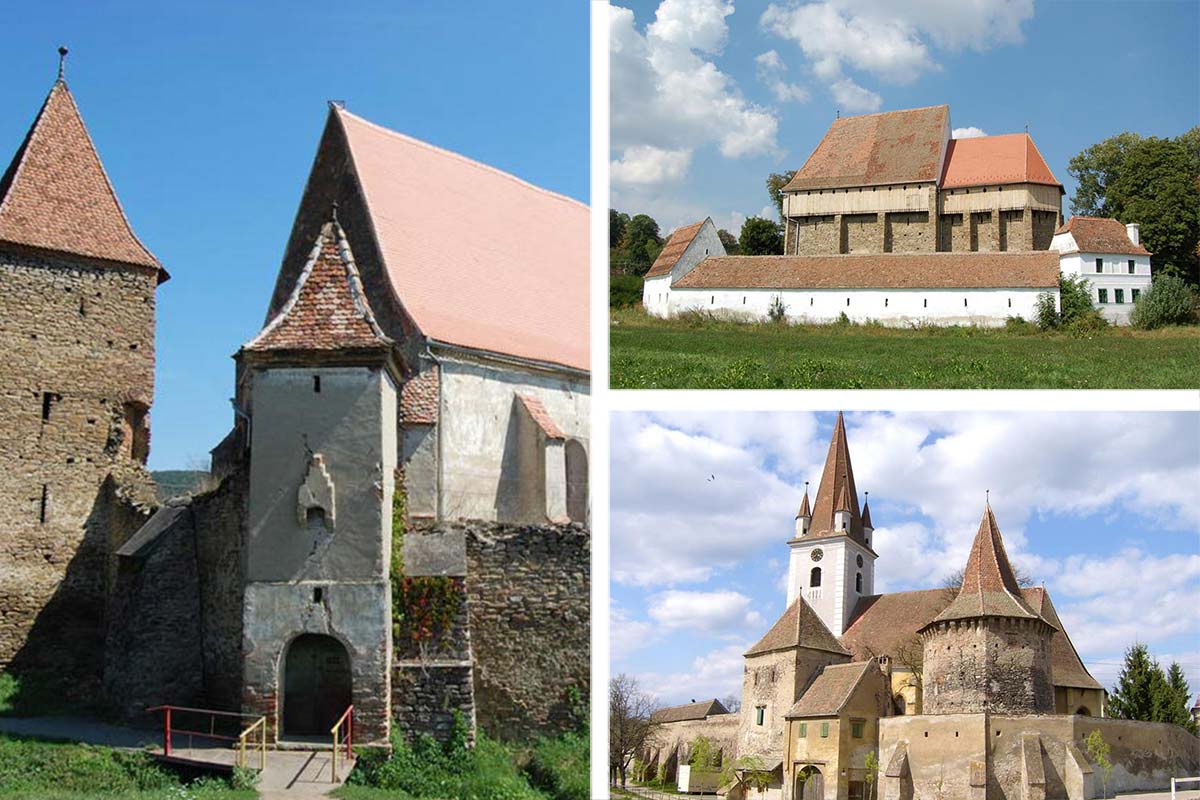
Fortified Churches of Transylvania
(15 January 2024)
X

(15 January 2024)
Transylvania is rich in history and around 160 fortified churches invite the interested visitor to take a trip through the past and present of the Transylvania region.
An overview of all these fortified churches and much more information:
https://xn--urlaub-in-rumnien-2qb.de/en / uir / fortified-churches /
An overview of all these fortified churches and much more information:
https://xn--urlaub-in-rumnien-2qb.de/en / uir / fortified-churches /
We thank Stiftung Kirchenburgen for the permission to use this image(s)
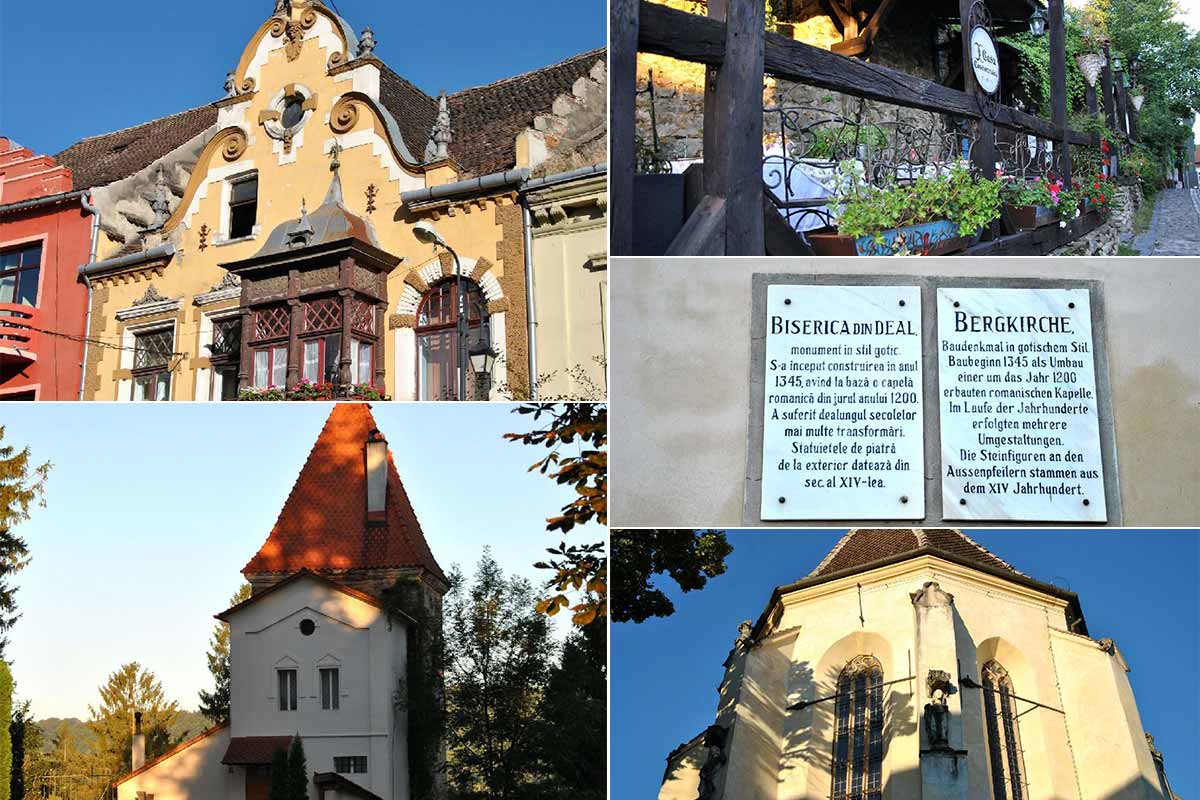
Sighisoara - beautiful and rich in history | Part 1/2
(14 January 2024)
X

(14 January 2024)
It takes many hours, if not days, to explore the city of Sighisoara ( in German Schäßburg ) in the district of Mureș.
You go over a lot of cobbles and sometimes you feel like you're not in Romania, but rather in an old town in Saxony ...
Schäßburg was founded in the second half of the 12th century by German immigrants, Transylvanian Saxons. In 1280 it was first mentioned as „ Sex Castrum ”, and in 1298 it was called Schespurch. Schaesbrich and mentioned in 1337 with the Hungarian name „ Seguzwar ”". In 1435, the Romanian name Sighisoara, borrowed from Hungarian, first appeared in writing.
The city has preserved its multicultural character to this day, and Schäßburg is again officially trilingual. City councils and tourist information are labeled in Romanian, German and Hungarian. There are kindergartens where German is spoken, as well as a primary school and a high school ( Bergschule Schäßburg ), where German is offered as a language of instruction. The mountain school allows the Abitur in German, which is also recognized by German universities. In addition, there are several Protestant churches and a lively community life in the city.
You go over a lot of cobbles and sometimes you feel like you're not in Romania, but rather in an old town in Saxony ...
Schäßburg was founded in the second half of the 12th century by German immigrants, Transylvanian Saxons. In 1280 it was first mentioned as „ Sex Castrum ”, and in 1298 it was called Schespurch. Schaesbrich and mentioned in 1337 with the Hungarian name „ Seguzwar ”". In 1435, the Romanian name Sighisoara, borrowed from Hungarian, first appeared in writing.
The city has preserved its multicultural character to this day, and Schäßburg is again officially trilingual. City councils and tourist information are labeled in Romanian, German and Hungarian. There are kindergartens where German is spoken, as well as a primary school and a high school ( Bergschule Schäßburg ), where German is offered as a language of instruction. The mountain school allows the Abitur in German, which is also recognized by German universities. In addition, there are several Protestant churches and a lively community life in the city.
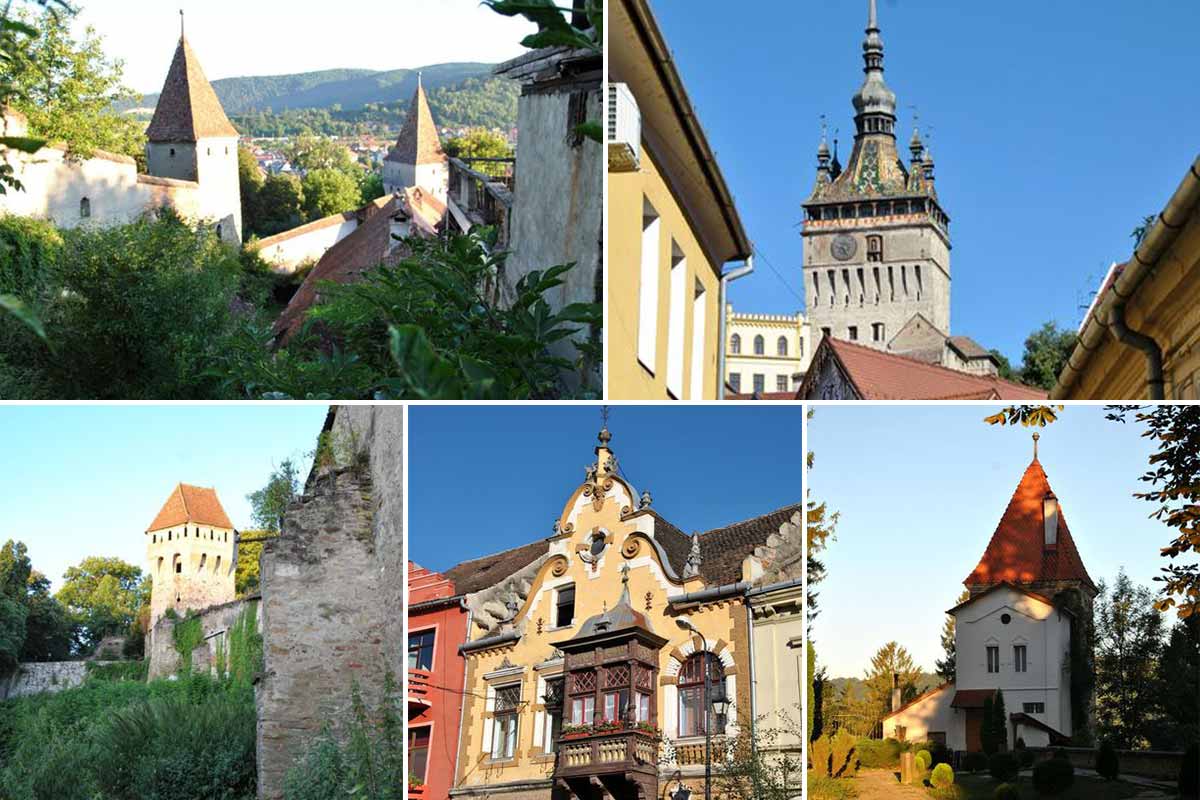
Sighisoara - beautiful and rich in history
(07 January 2024)
X

(07 January 2024)
It takes many hours, if not days, to explore the city of Sighisoara in Mureș County.
You go over a lot of cobbles and sometimes you feel like you're not in Romania, but rather in an old town in Saxony ...
Schäßburg ( German name Sighisoara ) was founded in the second half of the twelfth century. century founded by German immigrants, Transylvania. In 1280 it was first mentioned as „ Sex Castrum ”, and in 1298 it was called Schespurch. Schaesbrich and mentioned in 1337 with the Hungarian name „ Seguzwar ”". In 1435, the Romanian name Sighisoara, borrowed from Hungarian, first appeared in writing.
The city has preserved its multicultural character to this day, and Schäßburg is again officially trilingual. City councils and tourist information are labeled in Romanian, German and Hungarian. There are kindergartens where German is spoken, as well as a primary school and a high school ( Bergschule Schäßburg ), where German is offered as a language of instruction. The mountain school allows the Abitur in German, which is also recognized by German universities. In addition, there are several Protestant churches and a lively community life in the city.
You go over a lot of cobbles and sometimes you feel like you're not in Romania, but rather in an old town in Saxony ...
Schäßburg ( German name Sighisoara ) was founded in the second half of the twelfth century. century founded by German immigrants, Transylvania. In 1280 it was first mentioned as „ Sex Castrum ”, and in 1298 it was called Schespurch. Schaesbrich and mentioned in 1337 with the Hungarian name „ Seguzwar ”". In 1435, the Romanian name Sighisoara, borrowed from Hungarian, first appeared in writing.
The city has preserved its multicultural character to this day, and Schäßburg is again officially trilingual. City councils and tourist information are labeled in Romanian, German and Hungarian. There are kindergartens where German is spoken, as well as a primary school and a high school ( Bergschule Schäßburg ), where German is offered as a language of instruction. The mountain school allows the Abitur in German, which is also recognized by German universities. In addition, there are several Protestant churches and a lively community life in the city.
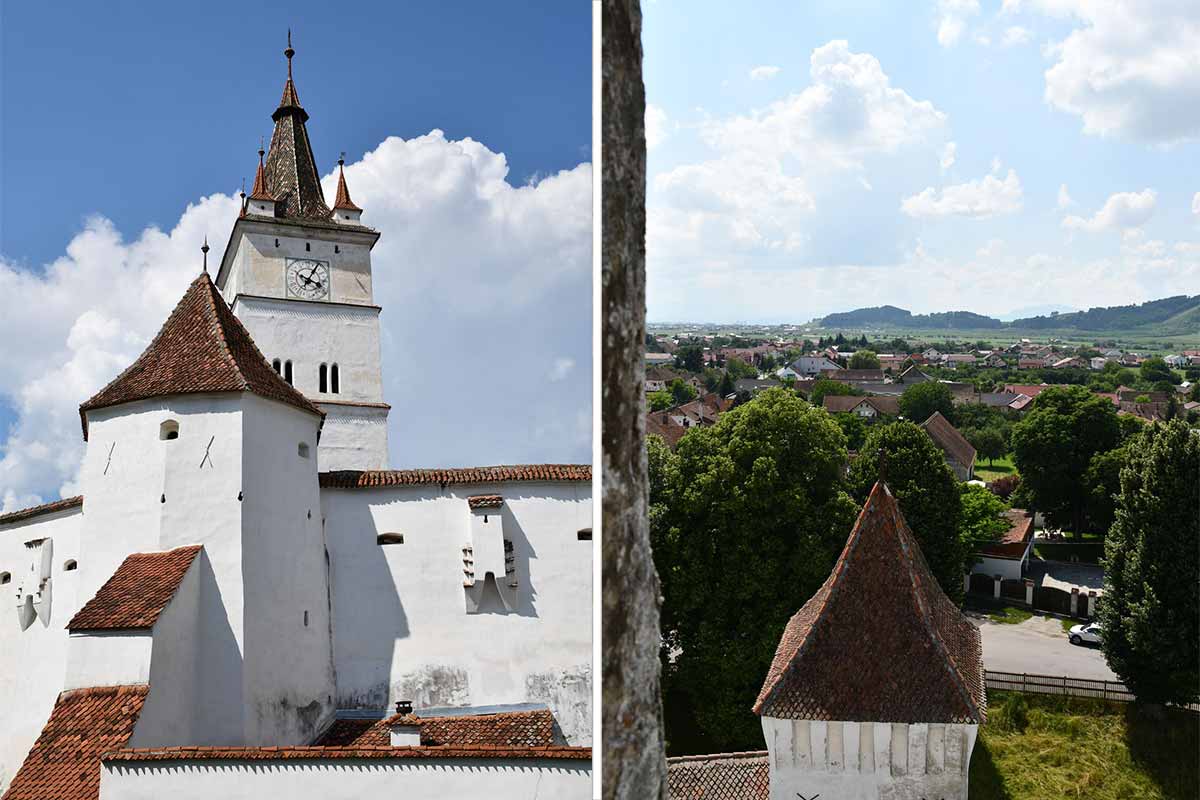
Our tip: Harman | Honey Mountain | Brasov County
(02 November 2023)
X

(02 November 2023)
Honigberg (in Saxon Huntschprich, in Hungarian Szaszhermany) is a commune and village, one of the most famous fortified churches and only a few kilometers from Brasov.
https://xn--urlaub-in-rumnien-2qb.de/en/uir/the-fortress-of-harman/
This fortified church is a completely preserved small fortress with the church in the center. Besides an interesting museum, you can also visit the battlements, the tower and the church. You must have seen it and it is also for families with children, because of the many corridors, stairs and more ... an exciting and beautiful experience
About the place: the Hungarian King Andrew II in 1211 awarded the Burzenland to the Teutonic Order of Knights, who settled here, built castles, brought German settlers to the country and founded villages, including Honigberg.
The first documented mention of the village was in 1240 under Mons Mellis ("Mountain of Honey"). At that time, King Bela IV granted the Cistercian Order patronage over the churches of Marienburg, Petersberg, Honigberg and Tartlau.
https://xn--urlaub-in-rumnien-2qb.de/en/uir/the-fortress-of-harman/
This fortified church is a completely preserved small fortress with the church in the center. Besides an interesting museum, you can also visit the battlements, the tower and the church. You must have seen it and it is also for families with children, because of the many corridors, stairs and more ... an exciting and beautiful experience
About the place: the Hungarian King Andrew II in 1211 awarded the Burzenland to the Teutonic Order of Knights, who settled here, built castles, brought German settlers to the country and founded villages, including Honigberg.
The first documented mention of the village was in 1240 under Mons Mellis ("Mountain of Honey"). At that time, King Bela IV granted the Cistercian Order patronage over the churches of Marienburg, Petersberg, Honigberg and Tartlau.
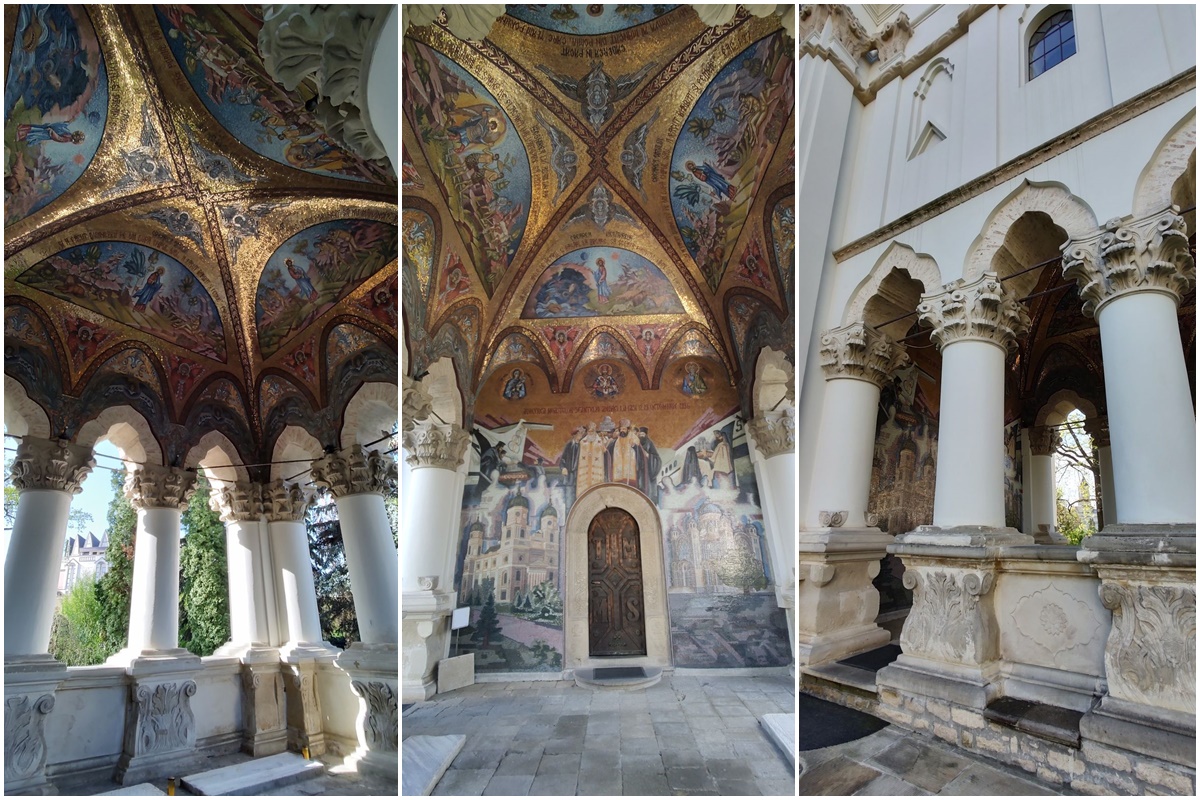
Old Metropolitan Church | St. Gheorghe
(13 October 2023)
X

(13 October 2023)
Right next to the largest church in Iasi, Metropolitan Cathedral (Metropolitan Cathedral), this church is just as impressive,
Gheorghe / Mitropolia Veche Church is an Orthodox church in Iași, which was built between 1761 and 1769 by Metropolitan * Gavriil Callimachi and serves as a Metropolitan Cathedral*.
* Since early Christianity, the Metropolitan Office refers to a senior bishop who chairs an association of dioceses and is based in a provincial capital (ancient Greek: μητρό ▉ λις, mētrópolis, mother town) (see). Today, the metropolitan's office still exists in the Roman Catholic Church, as well as in the Orthodox Churches, through which the legal structure differs (quote: Wikipedia)
Gheorghe / Mitropolia Veche Church is an Orthodox church in Iași, which was built between 1761 and 1769 by Metropolitan * Gavriil Callimachi and serves as a Metropolitan Cathedral*.
* Since early Christianity, the Metropolitan Office refers to a senior bishop who chairs an association of dioceses and is based in a provincial capital (ancient Greek: μητρό ▉ λις, mētrópolis, mother town) (see). Today, the metropolitan's office still exists in the Roman Catholic Church, as well as in the Orthodox Churches, through which the legal structure differs (quote: Wikipedia)
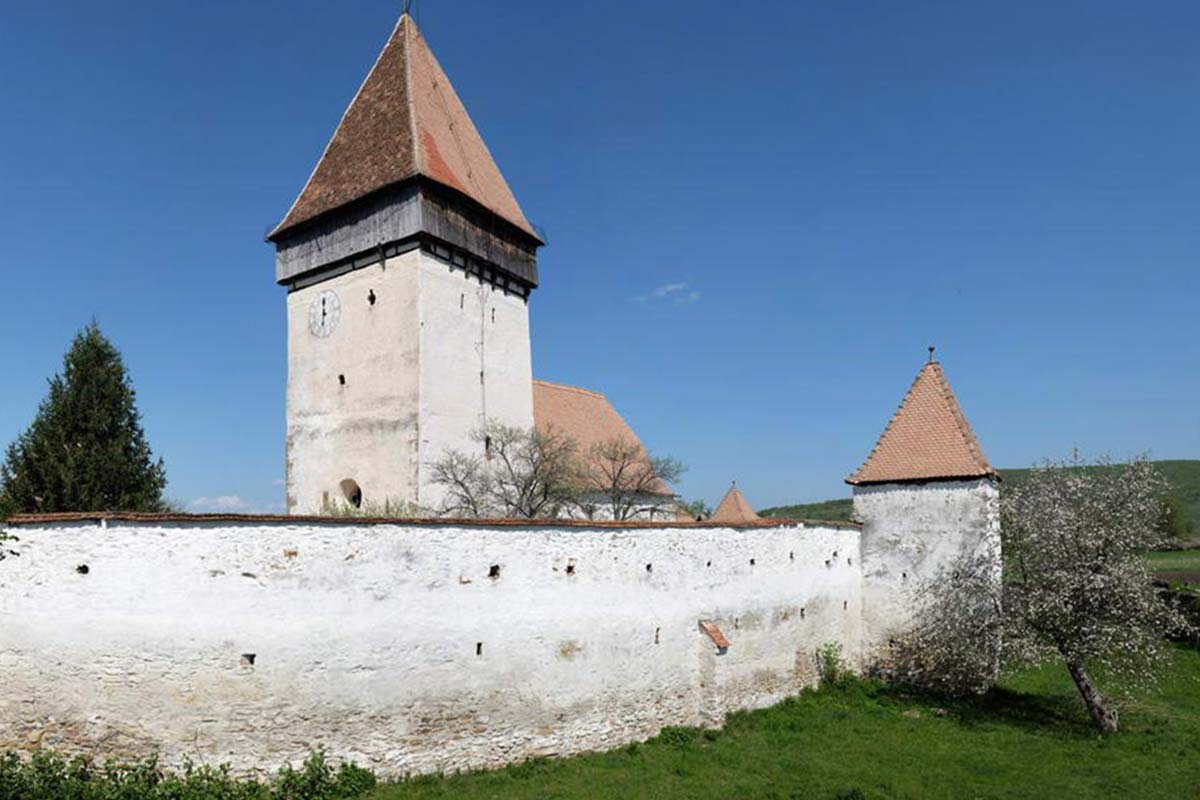
Fortified churches in Transylvania - wooden fortresses
(19 September 2023)
X

(19 September 2023)
There are over 160 fortified churches in the Transylvanian region, one of which is Holzmenge / Hosman.
Only the western portal and the pillars with arches separating the nave from the side naves have survived from the basilica, which was built in the 13th century. The western portal is a valuable testimony of the Romanesque architectural sculpture of Transylvania with numerous friezes in relief. Around 1500, the bell tower of the church was enlarged of wood and equipped with a battlement supported by consoles. During this, the side aisles of the church were removed. The two walls of the fortress, built in the 15th century, are connected by the gate tower and still show traces of the former battlements and gates.
Learn more about this church castle:
https://kirchenburgen.org/location/holzmengen-hosman/
Overview of all 160 church castles:
https://xn--urlaub-in-rumnien-2qb.de/de/uir/kirchenburgen/
Only the western portal and the pillars with arches separating the nave from the side naves have survived from the basilica, which was built in the 13th century. The western portal is a valuable testimony of the Romanesque architectural sculpture of Transylvania with numerous friezes in relief. Around 1500, the bell tower of the church was enlarged of wood and equipped with a battlement supported by consoles. During this, the side aisles of the church were removed. The two walls of the fortress, built in the 15th century, are connected by the gate tower and still show traces of the former battlements and gates.
Learn more about this church castle:
https://kirchenburgen.org/location/holzmengen-hosman/
Overview of all 160 church castles:
https://xn--urlaub-in-rumnien-2qb.de/de/uir/kirchenburgen/
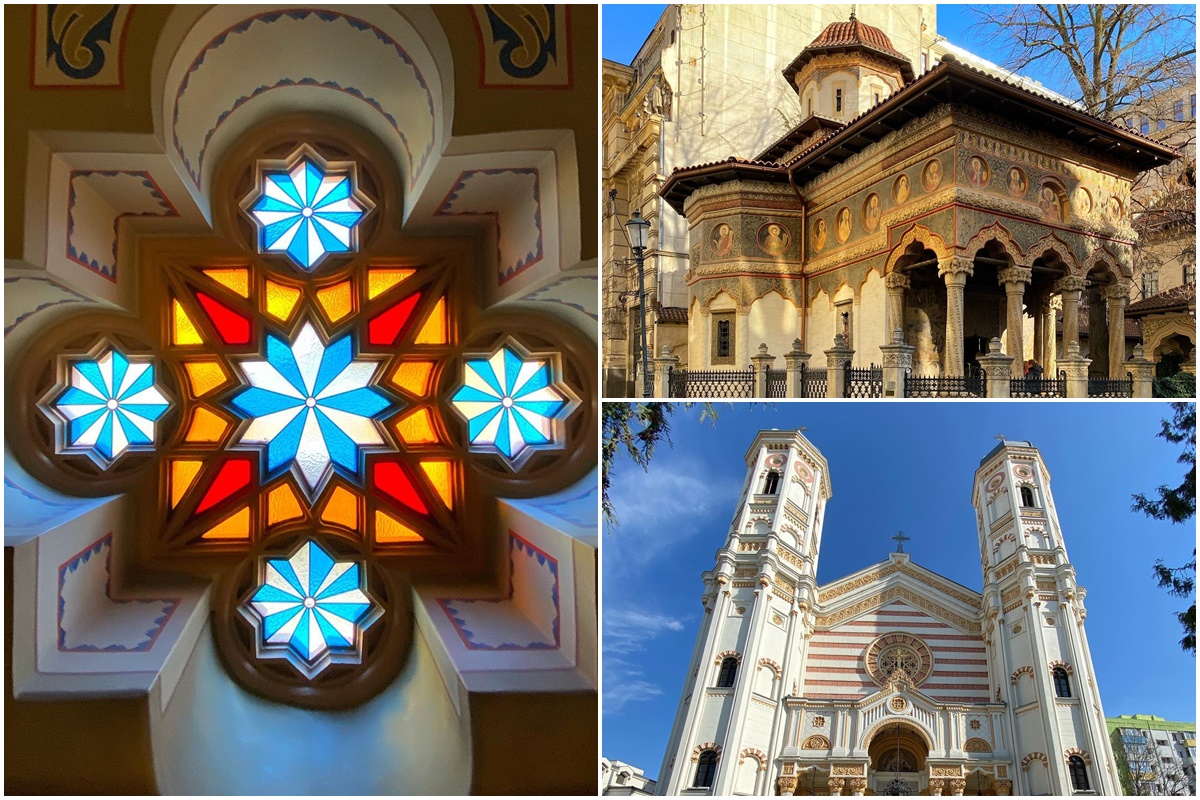
Churches in Bucharest | March 2023
(19 August 2023)
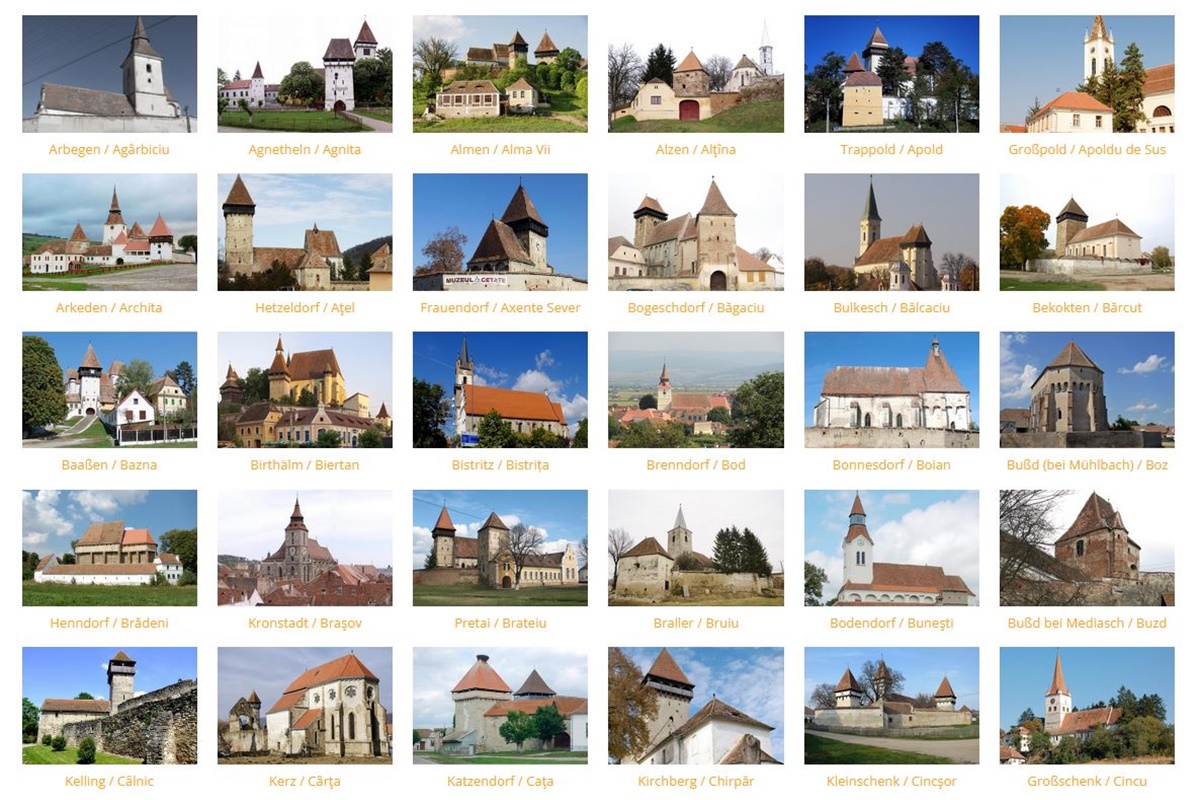
Fortified churches in Transylvania
(10 August 2023)
X

(10 August 2023)
We have expanded our overview ( Thank you Alex ) and there are already almost 180 fortified churches in Transylvania.
https://xn--urlaub-in-rumnien-2qb.de/de/uir/kirchenburgen/
All fortified churches are related to complete information, visiting hours and additional information from https://kirchenburgen.org Thanks to the Foundation of Fortified Churches for allowing us to use this data.
https://xn--urlaub-in-rumnien-2qb.de/de/uir/kirchenburgen/
All fortified churches are related to complete information, visiting hours and additional information from https://kirchenburgen.org Thanks to the Foundation of Fortified Churches for allowing us to use this data.
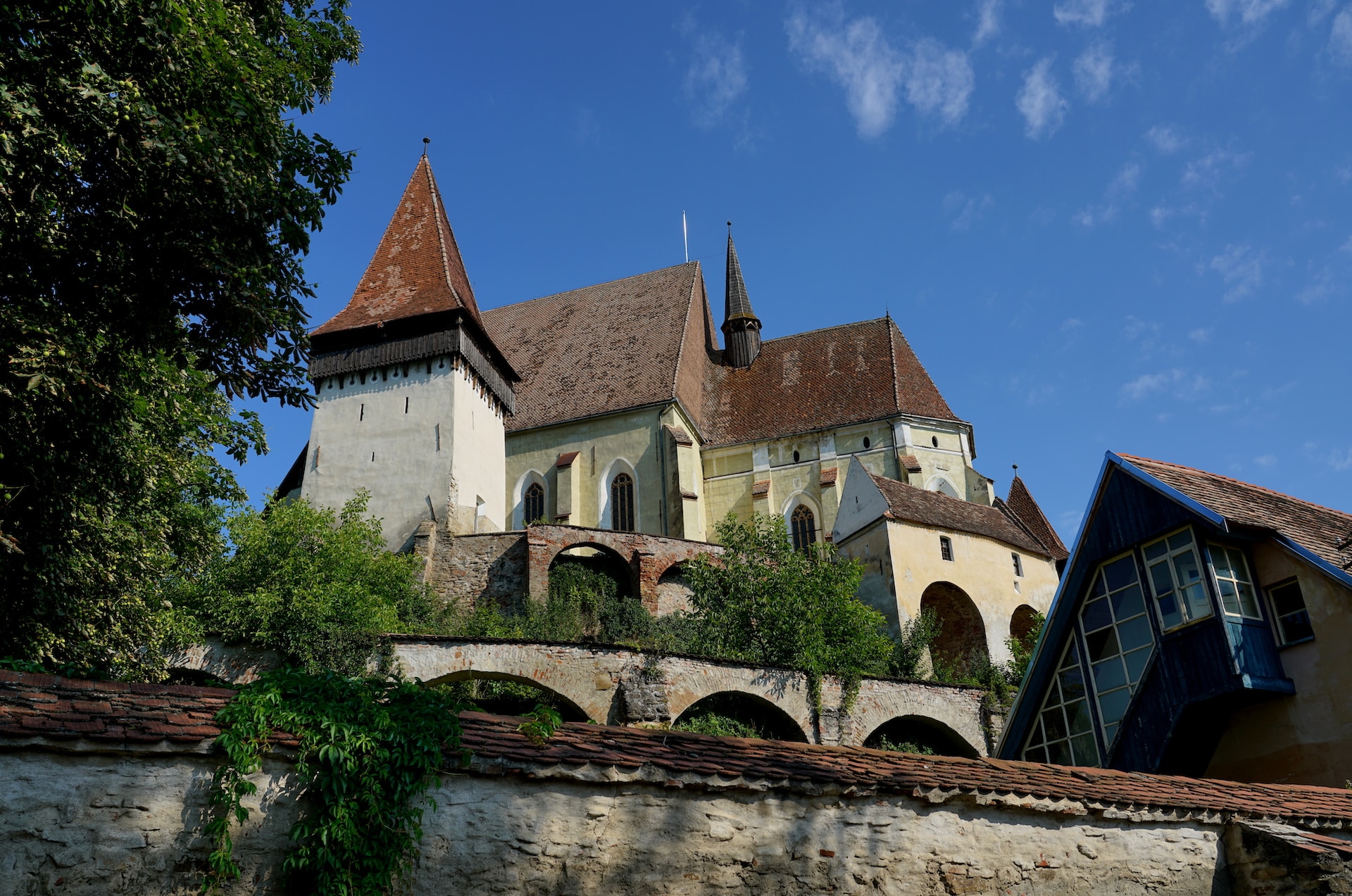
Fortified church / Biertan fortified church
(29 July 2023)
X

(29 July 2023)
The church is located in the municipality of Biertan ( in German Birthälm, in Hungarian Berethalom ) in the district of Sibiu and one of approx. 160 fortified churches in Transylvania.
https://xn--urlaub-in-rumnien-2qb.de/de/uir/kirchenburgen/
https://xn--urlaub-in-rumnien-2qb.de/de/uir/kirchenburgen/
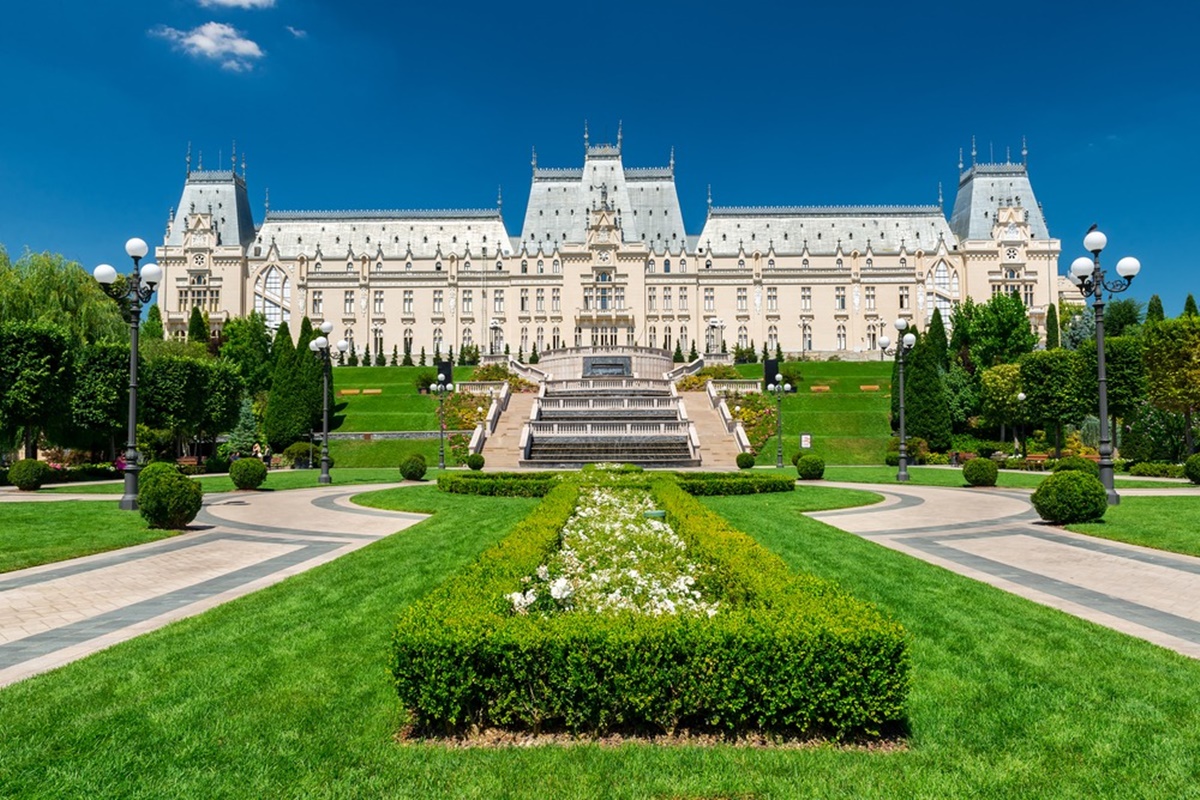
Palace of Culture in Iasi
(18 April 2023)
X

(18 April 2023)
Iași, the ancient capital of Moldova, a city on seven hills, is surrounded by charm and culture, history and poetry.
Centuries-old monasteries and churches, museums and memorials, the first university in the country and the towering culture palace are just some of the most important moments that make Iasi definitely worth a visit.
Centuries-old monasteries and churches, museums and memorials, the first university in the country and the towering culture palace are just some of the most important moments that make Iasi definitely worth a visit.
We thank Destinatia Anului for the permission to use this image(s)
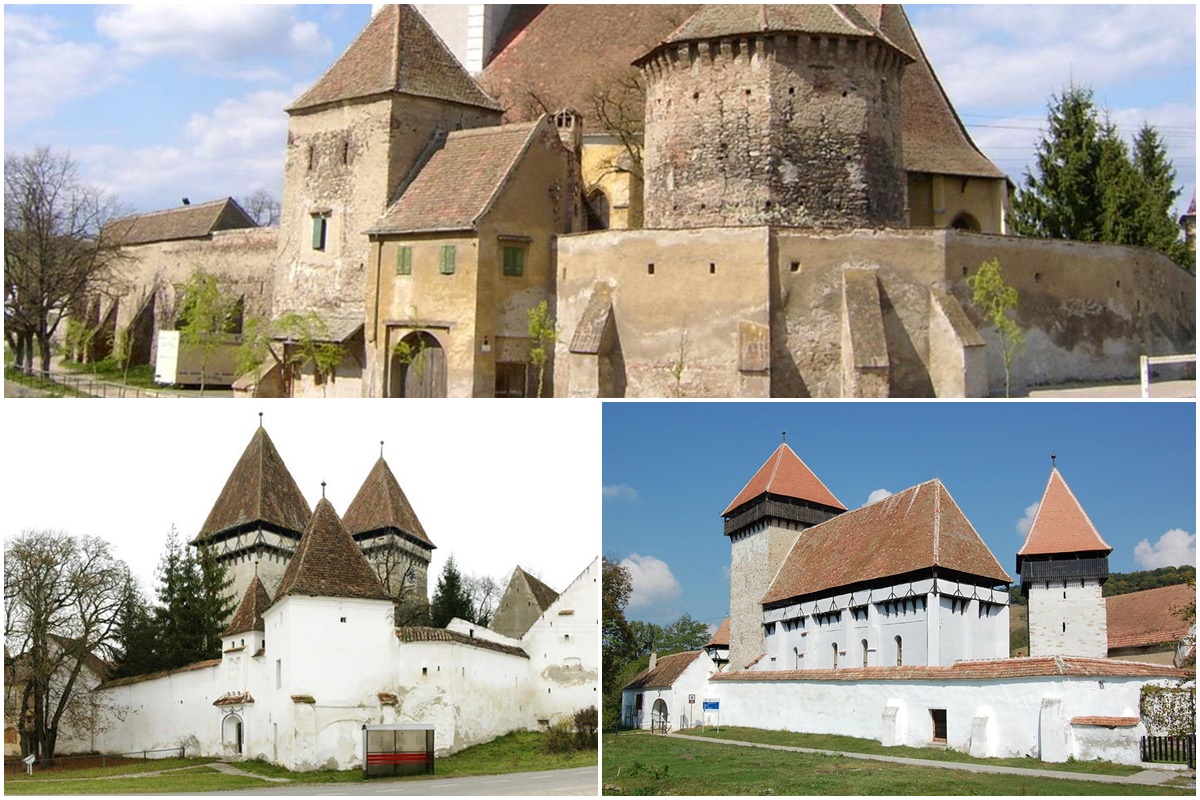
Castles in Transylvania (2 of 2)
(11 April 2023)
X

(11 April 2023)
Transylvania is rich in history and approx. 160 fortified churches invite the visitor interested to make a journey through the past and present of the Transylvania region.
An overview of all these fortified churches and much more information: https://xn--urlaub-in-rumnien-2qb.de/de/uir/kirchenburgen/
An overview of all these fortified churches and much more information: https://xn--urlaub-in-rumnien-2qb.de/de/uir/kirchenburgen/
We thank https://kirchenburgen.org for the permission to use this image(s)
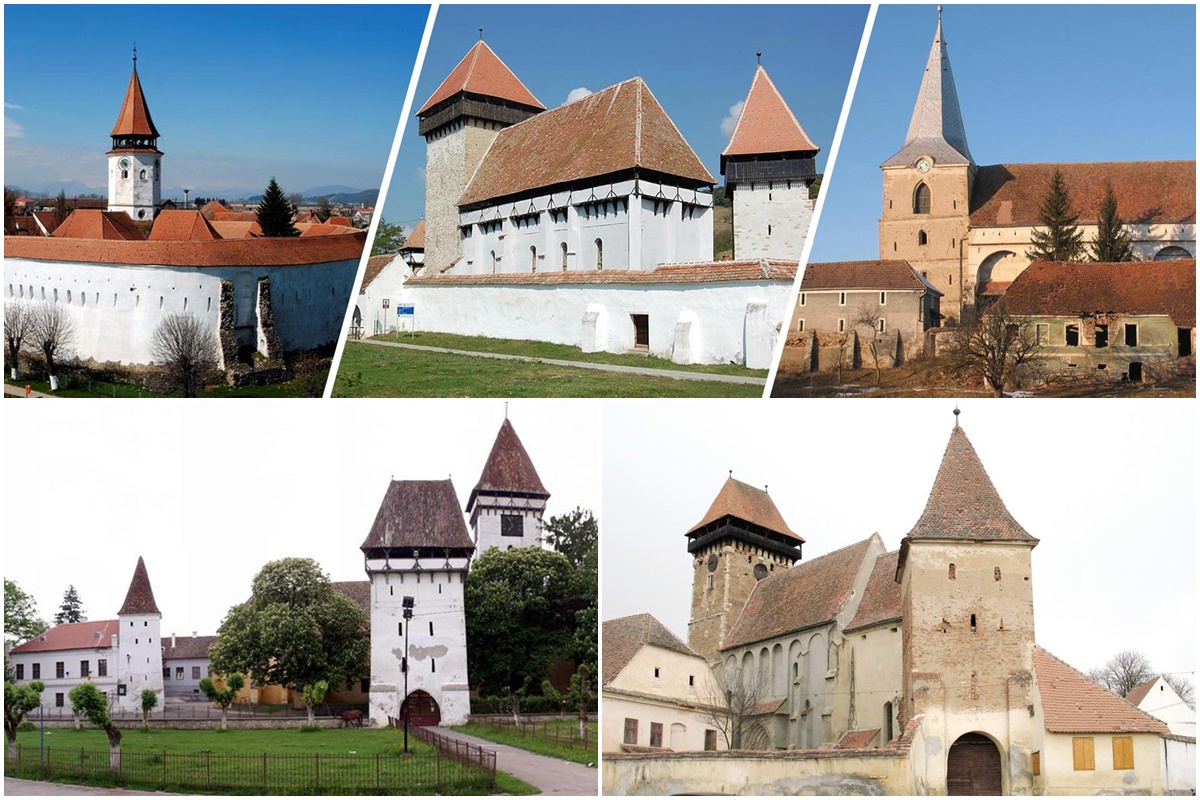
Castles in Transylvania (1 of 2)
(11 April 2023)
X

(11 April 2023)
Transylvania is rich in history and approx. 160 fortified churches invite the visitor interested to make a journey through the past and present of the Transylvania region.
An overview of all these fortified churches and much more information: https://xn--urlaub-in-rumnien-2qb.de/de/uir/kirchenburgen/
An overview of all these fortified churches and much more information: https://xn--urlaub-in-rumnien-2qb.de/de/uir/kirchenburgen/
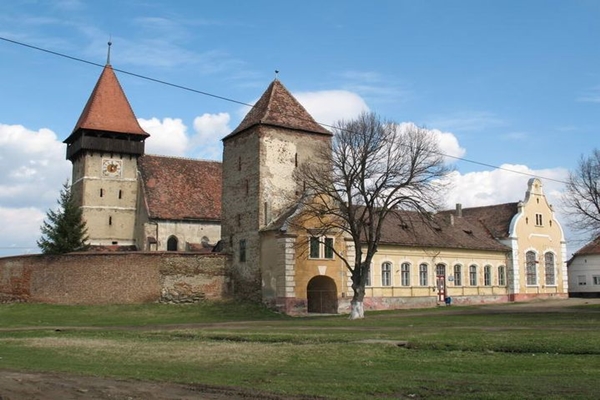
The fortified churches of Transylvania - Pretai
(21 March 2023)
X

(21 March 2023)
There are over 160 castles in the Transylvania region, one of them is Pretai / Brateiu.
Some remains of the 14th Gothic Basilica today. Jh. in stock. Today's church bears the characteristics of the 15th Jh. The churchyard was greatly altered by the removal of the south row of pillars and the raising of the outer walls and the installation of a barrel vault. Particularly remarkable are the pillars between the north and center aisles, which have profiled cross-sections and chapters with figurative representations.
On the journey through the Great Kokel valley (Târnava Mare), the Brateiu castle appears a few kilometers east of Mediasch. It is located in the middle of the place at the beginning of the village.
Learn more about this church castle:
https://kirchenburgen.org/location/pretai-brateiu/
Overview of all 160 church castles:
https://xn--urlaub-in-rumnien-2qb.de/de/uir/kirchenburgen/
Some remains of the 14th Gothic Basilica today. Jh. in stock. Today's church bears the characteristics of the 15th Jh. The churchyard was greatly altered by the removal of the south row of pillars and the raising of the outer walls and the installation of a barrel vault. Particularly remarkable are the pillars between the north and center aisles, which have profiled cross-sections and chapters with figurative representations.
On the journey through the Great Kokel valley (Târnava Mare), the Brateiu castle appears a few kilometers east of Mediasch. It is located in the middle of the place at the beginning of the village.
Learn more about this church castle:
https://kirchenburgen.org/location/pretai-brateiu/
Overview of all 160 church castles:
https://xn--urlaub-in-rumnien-2qb.de/de/uir/kirchenburgen/
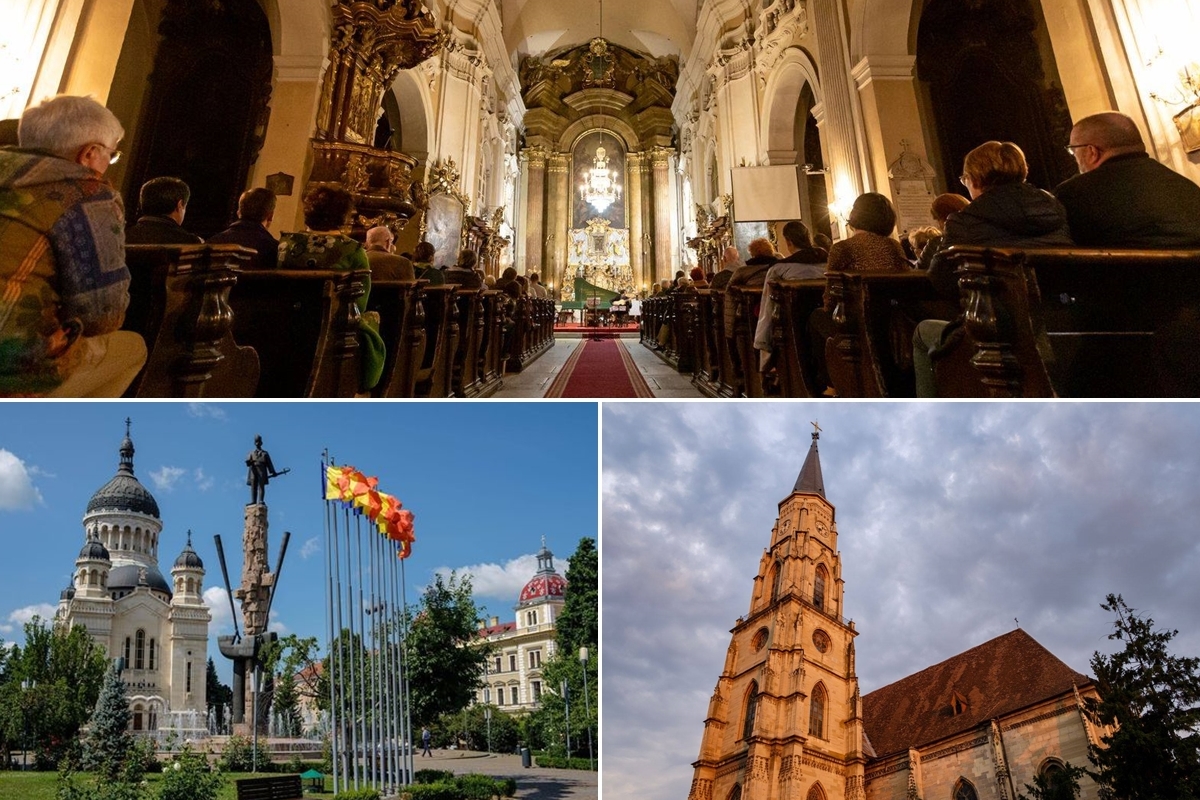
Churches in Cluj-Napoca
(08 March 2023)
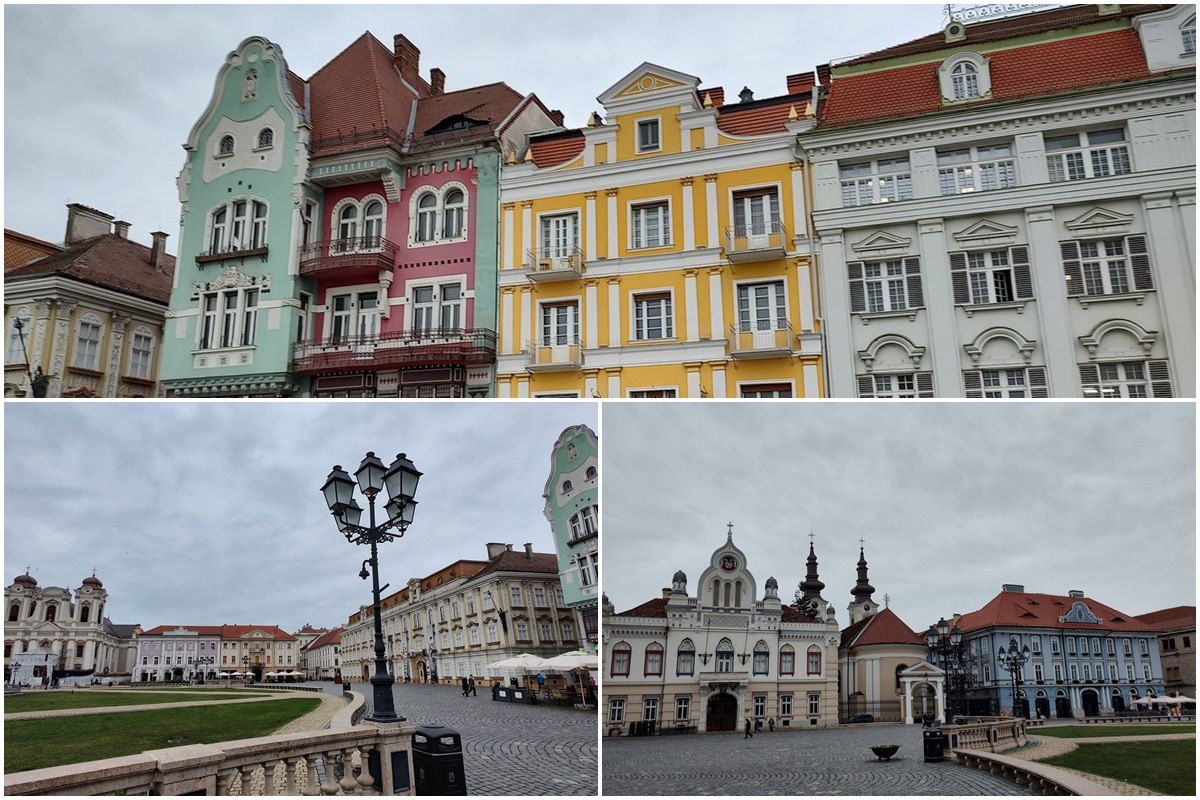
Timisoara (Temeschwar / Temeswar): Piata Unirii
(03 February 2023)
X

(03 February 2023)
Piata Unirii ( in German: Platz der Vereinigung ), called colloquial Domplatz, is the oldest square in the city of Timișoara.
It is located in the old fortified city of Cetate and is lined with churches and baroque palaces, mostly colored pastel, especially in the eighteenth and nineteenth centuries. century was built.
It is located in the old fortified city of Cetate and is lined with churches and baroque palaces, mostly colored pastel, especially in the eighteenth and nineteenth centuries. century was built.
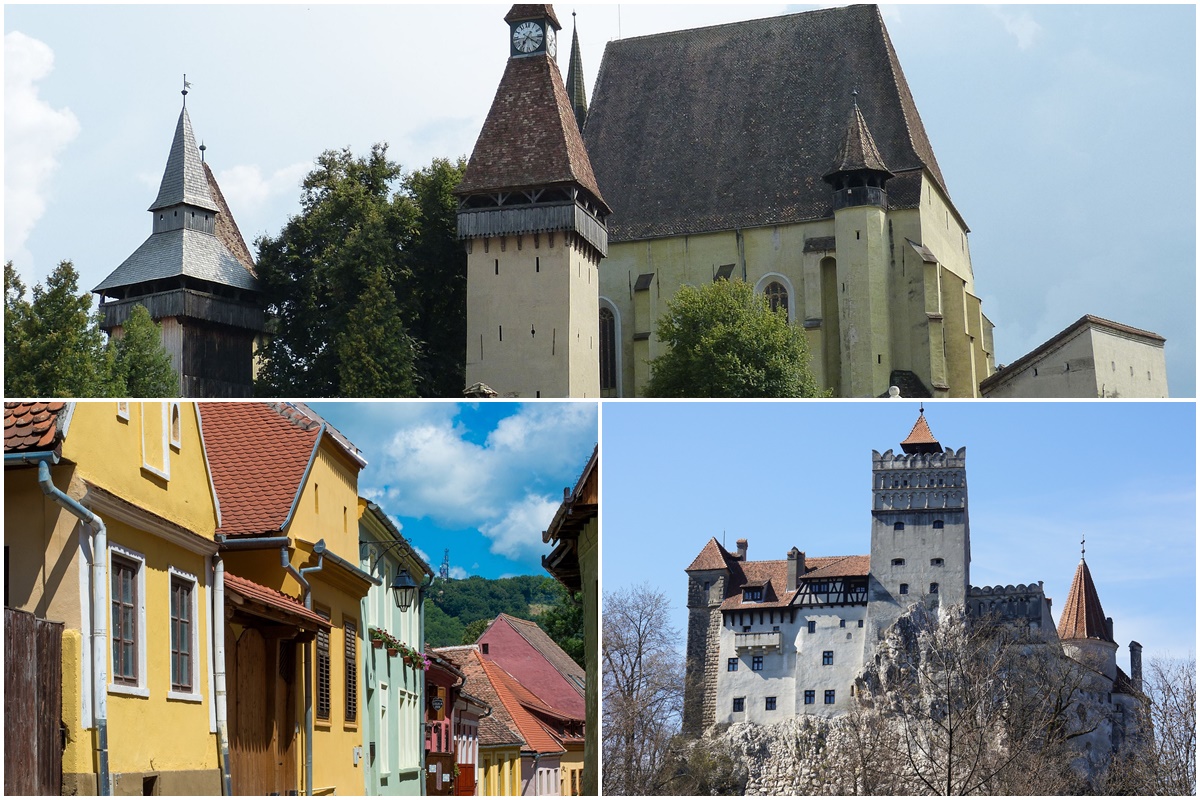
Explore Transylvania by bike
(01 February 2023)
X

(01 February 2023)
Experience a bike tour guided through Transylvania in 8 days.
Arrival in Sibiu ( Sibiu ), drive to the cities of Transylvania and the fortified churches Birthälm, Reichesdorf and Mediasch. Tour / city in Schäßburg ( Sighisoara ) and Kronstadt experience and also Bran Castle and Rosenau Castle ( Rasnov ) to Zarnesti, known to bear observation stations.
7 x night, breakfast, adventure and more ... Bicycle rental, English language guide and luggage transport from accommodation to accommodation. A wonderful experience throughout Transylvania 🥰
All details of the ( tour date from May to September 2023 ):
Reisen Rumänien
Your German language partner for information, reservations and more:
Carpathian Tourism Center in Sibiu ( Sibiu ),
Reisen Rumänien
e-mail: alex@reisen-rumaien.com
Arrival in Sibiu ( Sibiu ), drive to the cities of Transylvania and the fortified churches Birthälm, Reichesdorf and Mediasch. Tour / city in Schäßburg ( Sighisoara ) and Kronstadt experience and also Bran Castle and Rosenau Castle ( Rasnov ) to Zarnesti, known to bear observation stations.
7 x night, breakfast, adventure and more ... Bicycle rental, English language guide and luggage transport from accommodation to accommodation. A wonderful experience throughout Transylvania 🥰
All details of the ( tour date from May to September 2023 ):
Reisen Rumänien
Your German language partner for information, reservations and more:
Carpathian Tourism Center in Sibiu ( Sibiu ),
Reisen Rumänien
e-mail: alex@reisen-rumaien.com
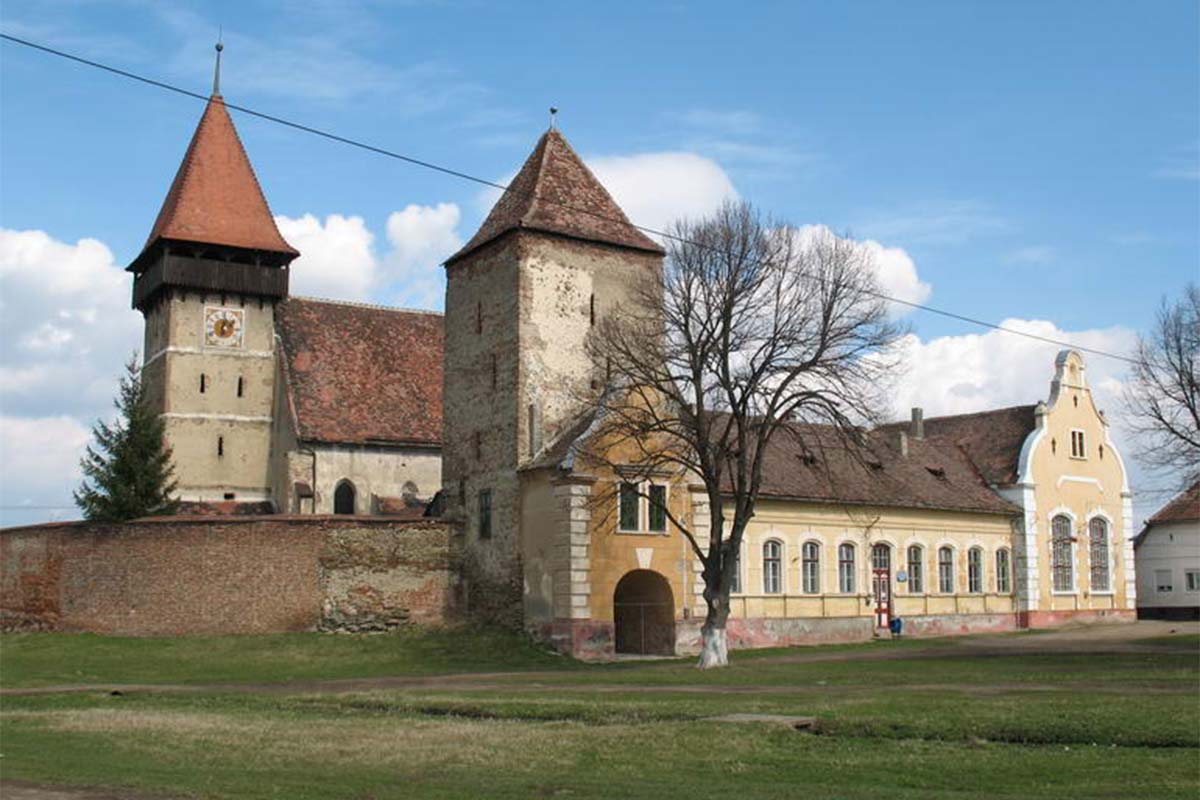
The fortified churches of Transylvania - Pretai
(29 October 2022)
X

(29 October 2022)
There are over 160 fortified churches in the Transylvanian region, one of which is Pretai / Brăteiu.
Only a few remains from the 14th-century Gothic basilica remain today. Today's church features 15th-century features. Of note are the pillars between the north and the central nave, which have profiled cross sections and capitals with figurative representations.
On the journey through the valley of the Great Kokel (Târnava Mare), a few kilometers east of Mediaș (MedJugendbauhütte Pretaiia?), Appears the fortified church from Brateiu. It is located in the middle of the village on the green of the village.
Learn more about this church castle:
https://kirchenburgen.org/location/pretai-brateiu/
Overview of all 160 church castles:
https://xn--urlaub-in-rumnien-2qb.de/de/uir/kirchenburgen.
Only a few remains from the 14th-century Gothic basilica remain today. Today's church features 15th-century features. Of note are the pillars between the north and the central nave, which have profiled cross sections and capitals with figurative representations.
On the journey through the valley of the Great Kokel (Târnava Mare), a few kilometers east of Mediaș (MedJugendbauhütte Pretaiia?), Appears the fortified church from Brateiu. It is located in the middle of the village on the green of the village.
Learn more about this church castle:
https://kirchenburgen.org/location/pretai-brateiu/
Overview of all 160 church castles:
https://xn--urlaub-in-rumnien-2qb.de/de/uir/kirchenburgen.
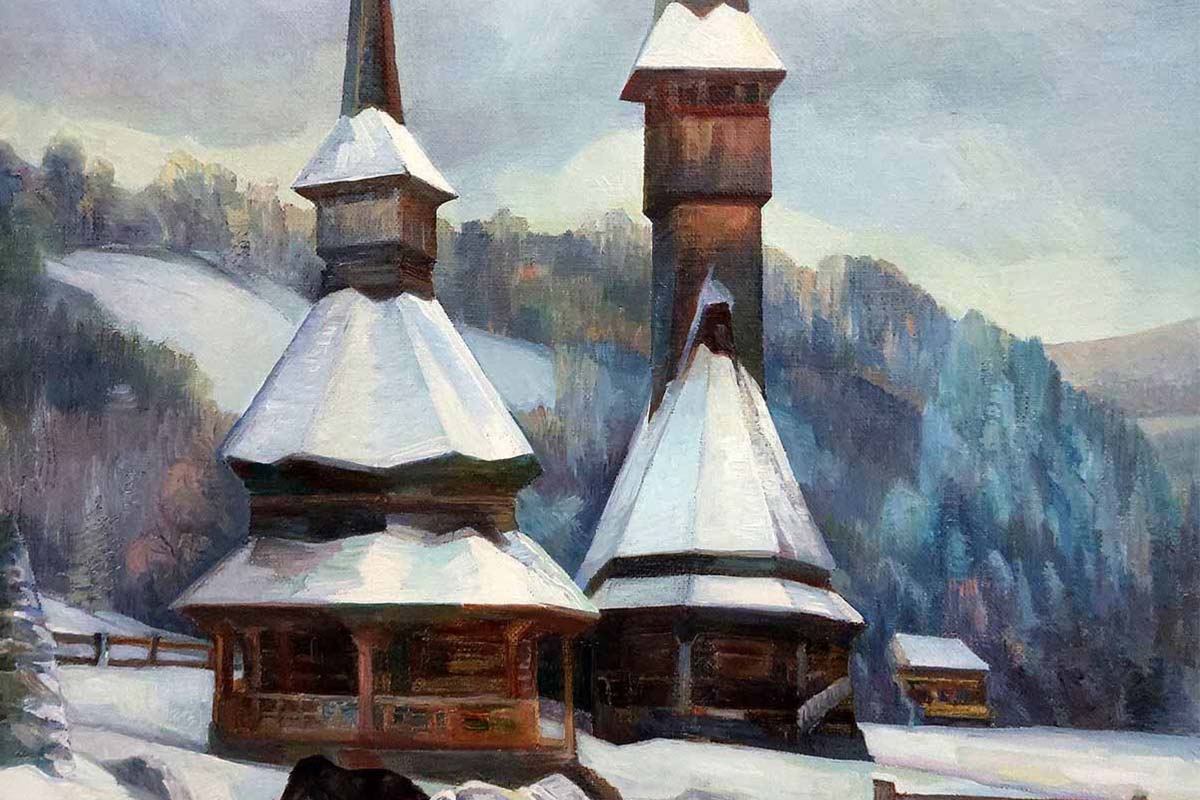
(Like) a painting… the wooden churches in Bârsana
(12 October 2022)
X

(12 October 2022)
Bârsana village / commune (old spelling Bîrsana) is located in Maramureș district. Located in a wonderful landscape, Bârsana has tourist attractions such as the wooden church "Entrance of the Mother of God into the Church" in the city center.
Bârsana Monastery, located on the southeastern edge of the city, was first mentioned in 1390, but abandoned and demolished again around 1800. The buildings on the site today were later rebuilt into wooden buildings. Today there is a monastery of Romanian Orthodox nuns.
Bârsana Monastery, located on the southeastern edge of the city, was first mentioned in 1390, but abandoned and demolished again around 1800. The buildings on the site today were later rebuilt into wooden buildings. Today there is a monastery of Romanian Orthodox nuns.
We thank Mariana Nistor for the permission to use this image(s)
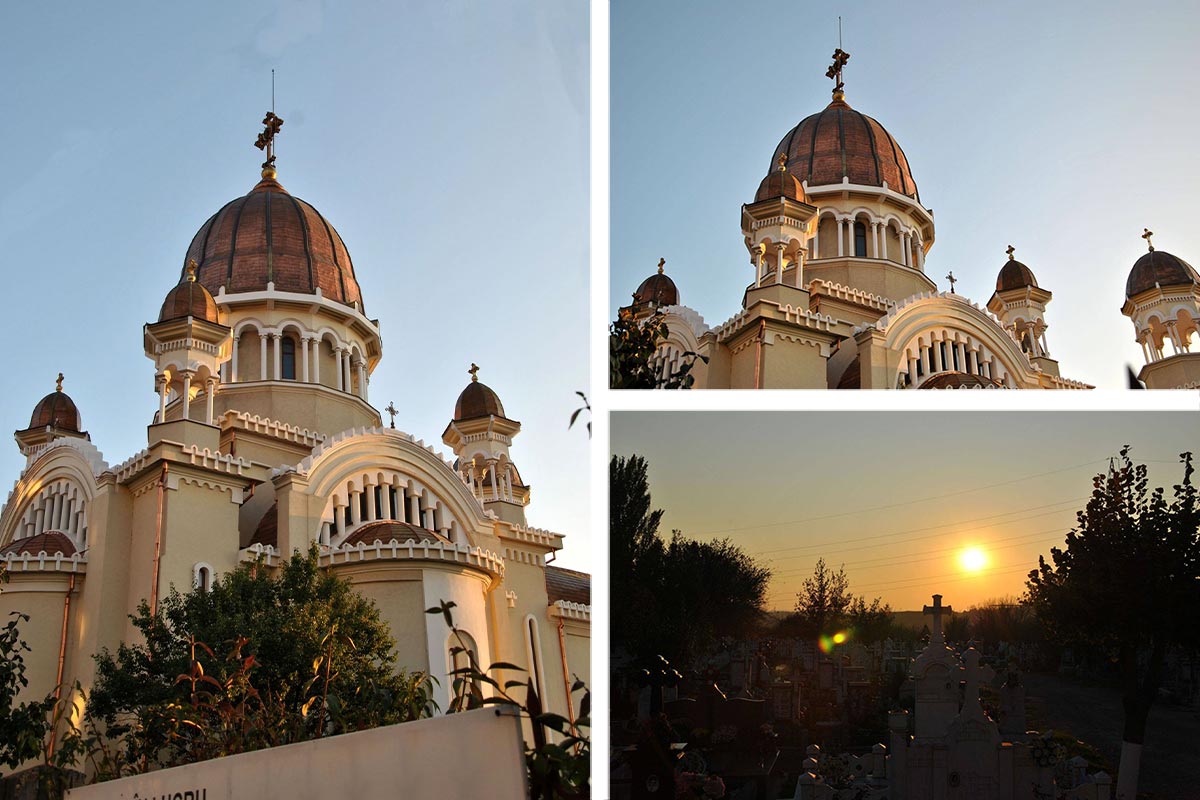
St. Paraschiva in the Afterglow, Galați
(02 September 2022)
X

(02 September 2022)
This church (Pious Parascheva Church) is located at the entrance in Galati and is one of the largest churches in the city.
The picture above the entrance shows Saint Pious Parascheva who was born in the 10th century in Epibatai (today Selimpaşa, near Istanbul in Turkey), a village in a Byzantine province and at the age of 15 entered religious life in -a monastery. and later as a hermit.
Images: early November 2020
The picture above the entrance shows Saint Pious Parascheva who was born in the 10th century in Epibatai (today Selimpaşa, near Istanbul in Turkey), a village in a Byzantine province and at the age of 15 entered religious life in -a monastery. and later as a hermit.
Images: early November 2020
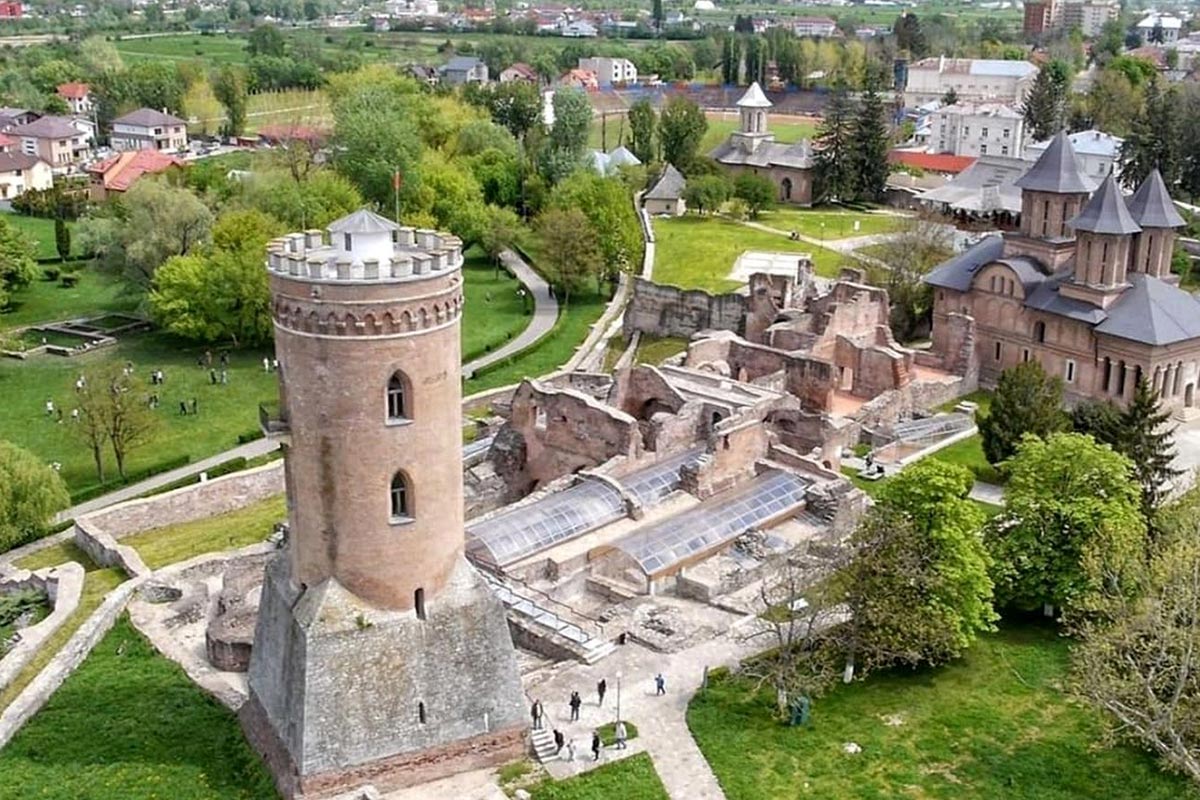
Târgoviște, Dâmbovița
(05 August 2022)
X

(05 August 2022)
The municipality of Târgoviște (Tergowiste or Tergowish in German) is the residence of Dâmbovița County and the former residence of the historical region of Wallachia.
The first known mention of the city was in 1396 by the Bavarian crusader Johannes Schiltberger.
At Târgoviste Vlad the IIIrd Dracula enthroned in 1456 *. In 1499, the Wallachian ruler Radu the Great (Radu the Great) rebuilt the church of St. Nicholas on the top of the hill, but only in 1514, under the rule of Prince Neagoe Basarab, the church was consecrated. Today it is known as Dealu Monastery.
Prince Matthew Basarab (1632-1654) repaired the city walls, renovated the old churches, and built several new places of worship. Târgoviște was the capital of Wallachia until 1659 and a royal seat until 1714.
* The enthronement: Ceremony in which a new monarch is inaugurated.
Image source: Destination of the Year
The first known mention of the city was in 1396 by the Bavarian crusader Johannes Schiltberger.
At Târgoviste Vlad the IIIrd Dracula enthroned in 1456 *. In 1499, the Wallachian ruler Radu the Great (Radu the Great) rebuilt the church of St. Nicholas on the top of the hill, but only in 1514, under the rule of Prince Neagoe Basarab, the church was consecrated. Today it is known as Dealu Monastery.
Prince Matthew Basarab (1632-1654) repaired the city walls, renovated the old churches, and built several new places of worship. Târgoviște was the capital of Wallachia until 1659 and a royal seat until 1714.
* The enthronement: Ceremony in which a new monarch is inaugurated.
Image source: Destination of the Year
We thank Destinatia Anului for the permission to use this image(s)
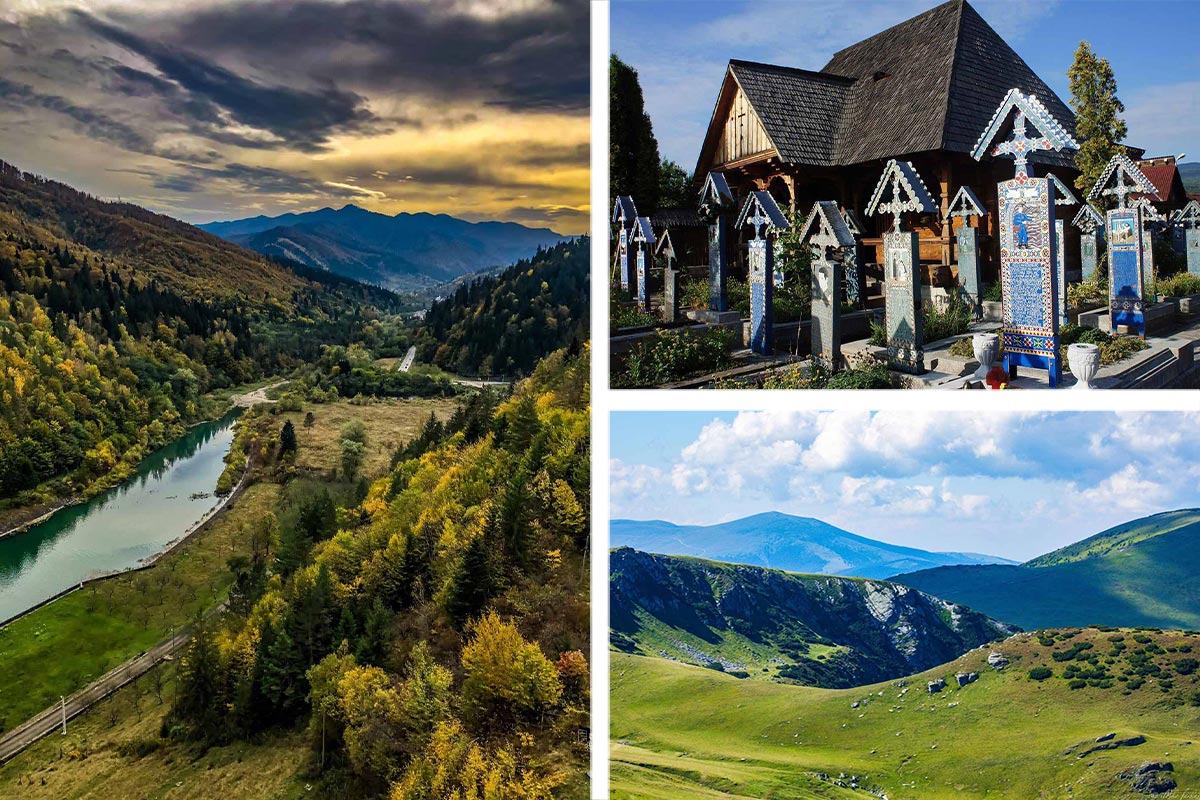
Romania, wonderful travel destinations
(17 June 2022)
X

(17 June 2022)
Images from many posts from the fall of 2020 with a lot of information about tourist attractions, localities and many others in Romania.
Piatra Neamț (Kreuzburg at Bistriț), muddy volcanoes, Timișoara at night, Izvorul Muntelui, Botoșani, churches in northeastern Romania, Donaudelta, Cocoșu Monastery, autumn in the mountains in Brașov, the Transfelegăului and Napului mountain road, Cluj-Napoca and Cluj surroundings, Transalpina, "Merry Cemetery" from Săpânța and many, many more ...
Find out more:
https://xn--urlaub-in-rumnien-2qb.de /
Piatra Neamț (Kreuzburg at Bistriț), muddy volcanoes, Timișoara at night, Izvorul Muntelui, Botoșani, churches in northeastern Romania, Donaudelta, Cocoșu Monastery, autumn in the mountains in Brașov, the Transfelegăului and Napului mountain road, Cluj-Napoca and Cluj surroundings, Transalpina, "Merry Cemetery" from Săpânța and many, many more ...
Find out more:
https://xn--urlaub-in-rumnien-2qb.de /
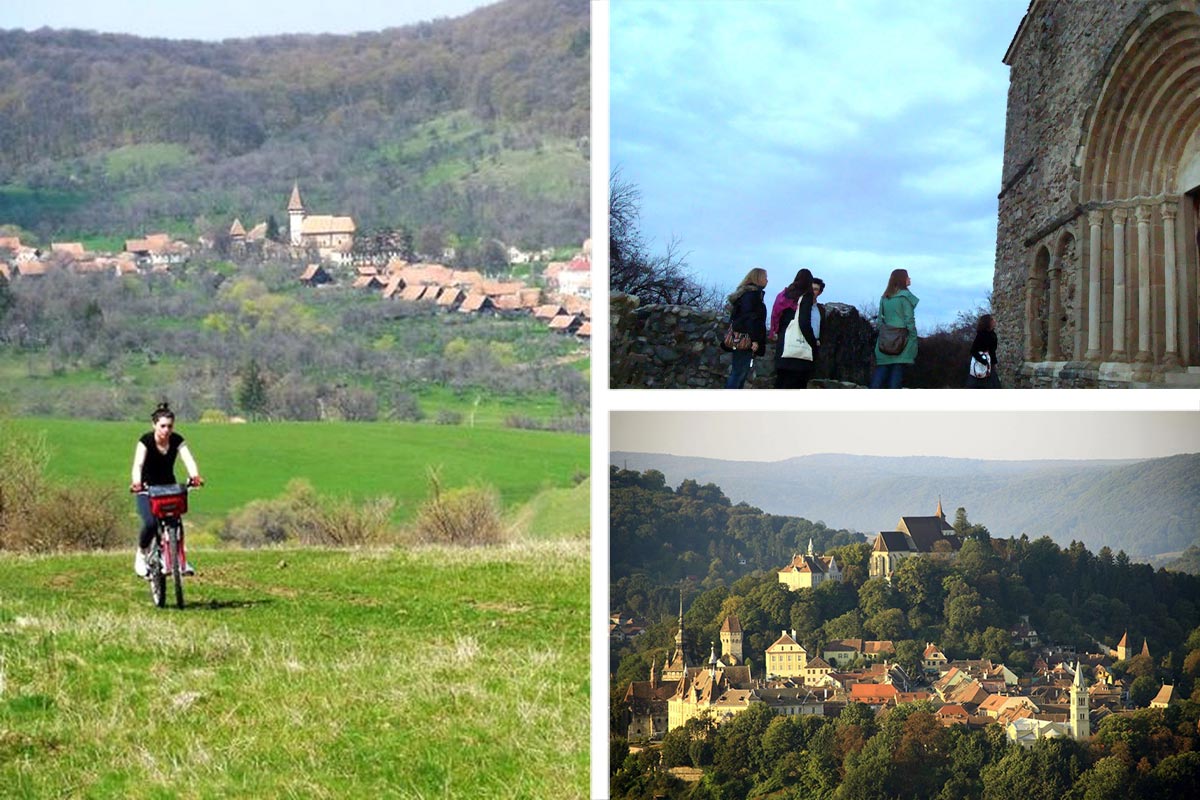
Day trips, tours, city tours and more...
(10 June 2022)
X

(10 June 2022)
Wanderlust Tours from Sighișoara in Mureș County offers a wide range of personalized, nature, cultural and also culinary tours in Transylvania.
Day trips to visit important fortified churches, cycling and hiking trips, "Views" to palaces, castles and much more ..., a city tour of the old town of Sighisoara and discoveries about local cuisine, crafts, history, traditions authentic and many, much more!
More information and all contact details for this German-speaking tourism provider: https://www.wanderlust-tour.ro/transilvania/?lang=de
Day trips to visit important fortified churches, cycling and hiking trips, "Views" to palaces, castles and much more ..., a city tour of the old town of Sighisoara and discoveries about local cuisine, crafts, history, traditions authentic and many, much more!
More information and all contact details for this German-speaking tourism provider: https://www.wanderlust-tour.ro/transilvania/?lang=de
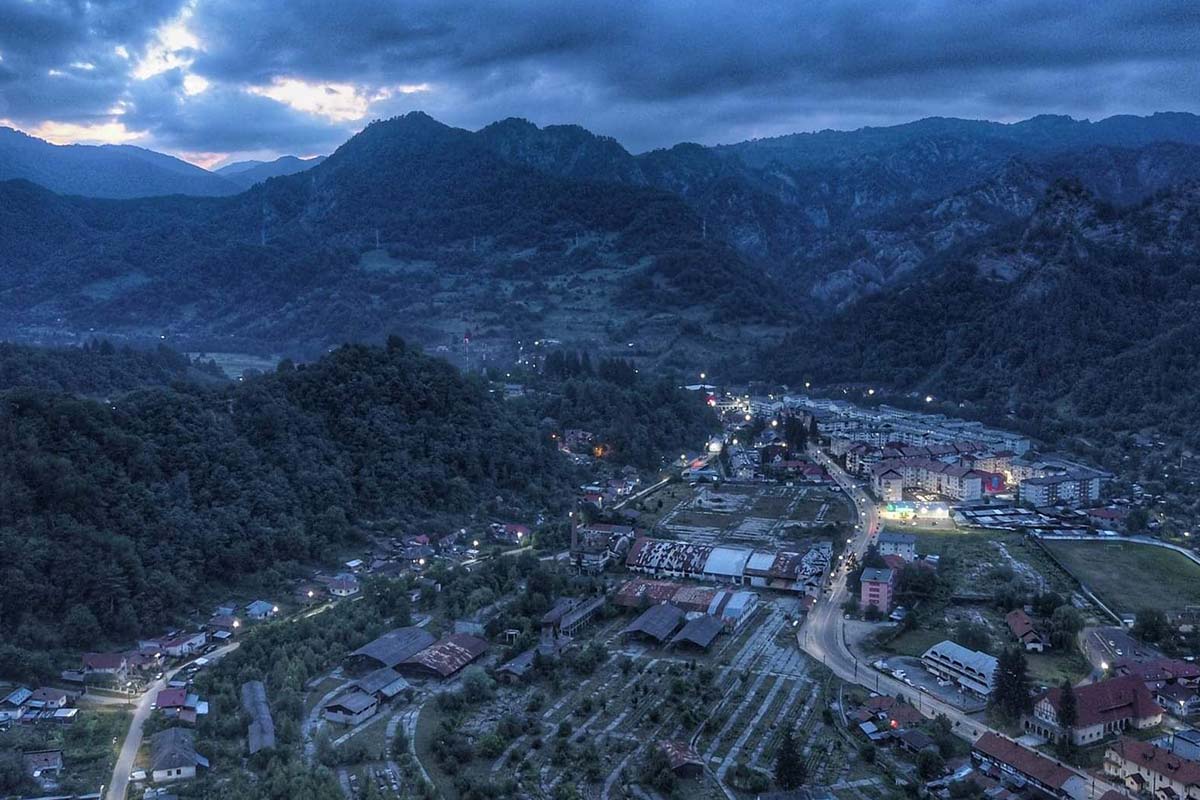
Brezoi
(20 May 2022)
X

(20 May 2022)
Brezoi is a small town in Vâlcea County, consisting of the sub-municipality of Brezoi and the villages of Călineşti, Corbu, Drăgăneşti, Golotreni, Păscoaia, Valea lui Stan, Vasilatu and Văratica.
The city offers cultural-historical and archeological sites, monasteries and churches, many offers in the field of sports, fishing, hiking and cycling ... and of course mountains, nature and more mountains and nature.
Brezoi is located about 80 km south of Hermannstadt (Sibiu) in the middle of the Cozia National Park.
Image source: Destination of the Year
The city offers cultural-historical and archeological sites, monasteries and churches, many offers in the field of sports, fishing, hiking and cycling ... and of course mountains, nature and more mountains and nature.
Brezoi is located about 80 km south of Hermannstadt (Sibiu) in the middle of the Cozia National Park.
Image source: Destination of the Year
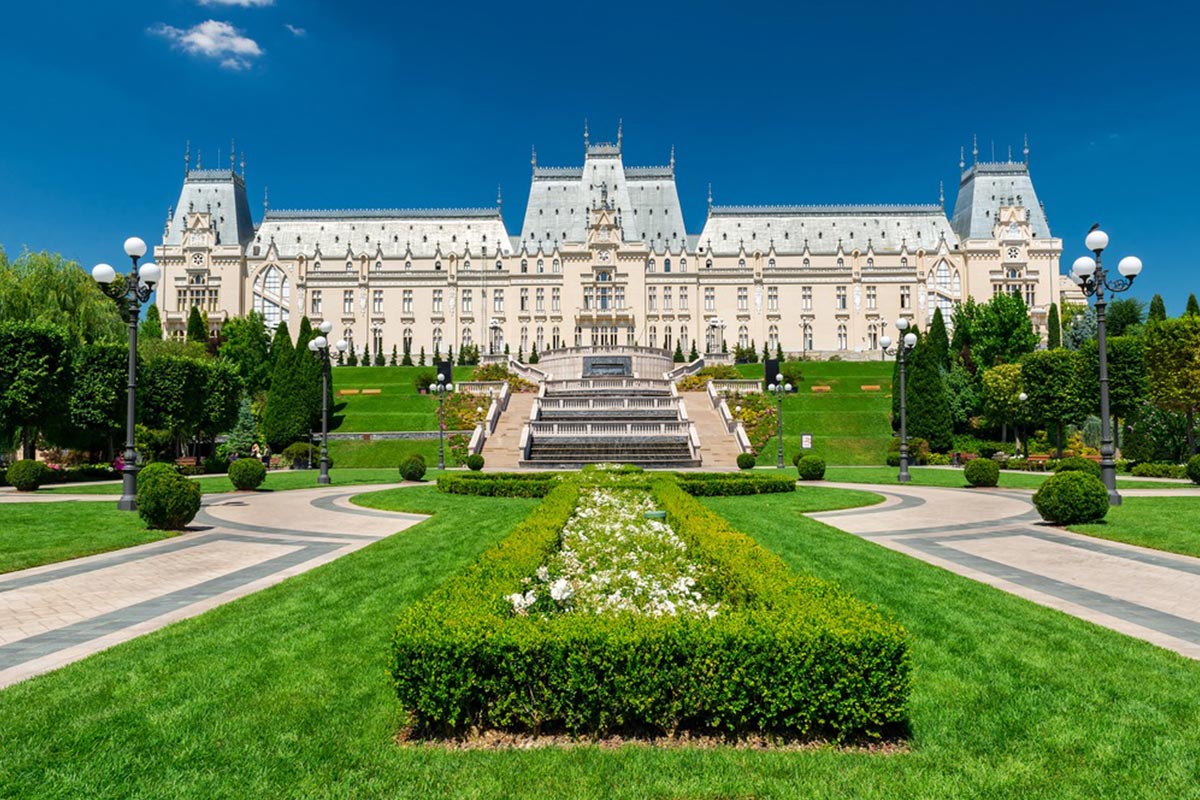
Destinations of the year 2022
(20 May 2022)
X

(20 May 2022)
Iasi, the ancient capital of Moldova, a city on seven hills, is surrounded by charm and culture, history and poetry.
Centuries-old monasteries and churches, museums and memorials, the country's first university and the towering Palace of Culture are just some of the attractions that make Iasi definitely worth a visit.
Text / Image Source: Destination of the Year
Image: Palace of Culture in Iasi, May 2022
Centuries-old monasteries and churches, museums and memorials, the country's first university and the towering Palace of Culture are just some of the attractions that make Iasi definitely worth a visit.
Text / Image Source: Destination of the Year
Image: Palace of Culture in Iasi, May 2022
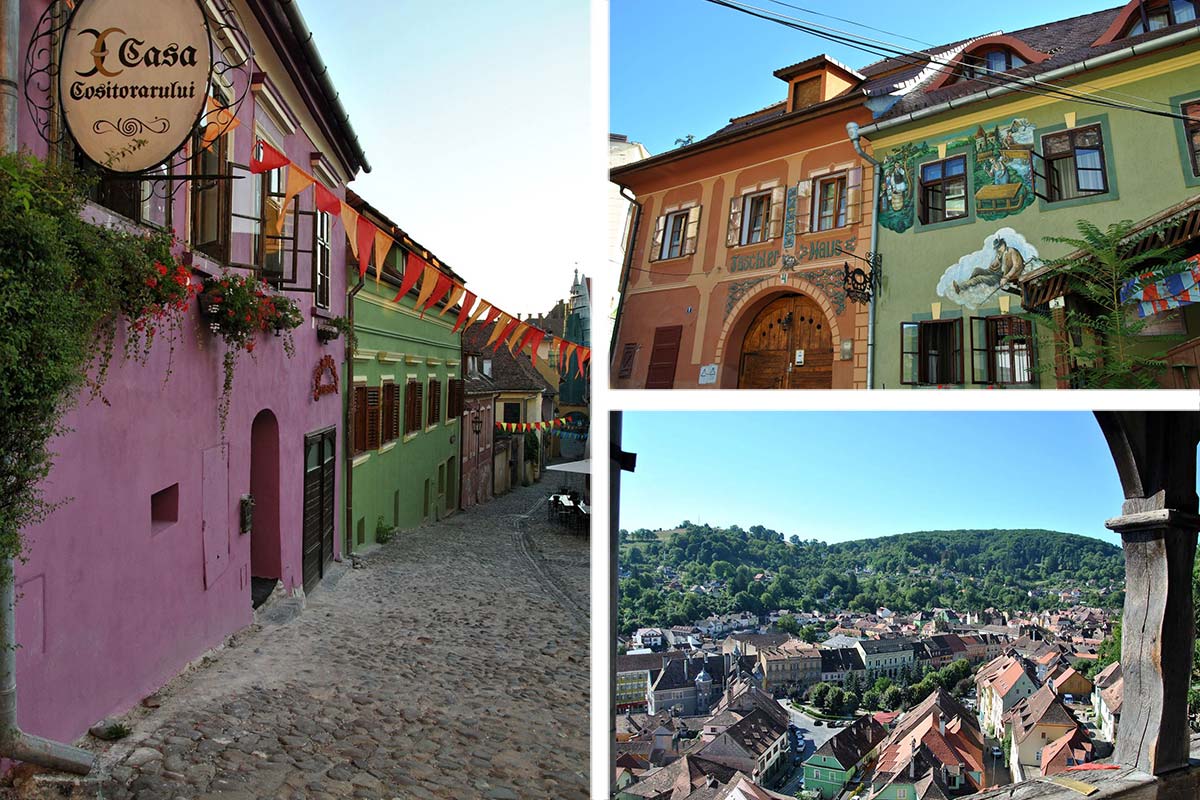
Sighisoara - beautiful and rich in history
(08 May 2022)
X

(08 May 2022)
It takes many hours if not days to explore the city of Sighișoara in Mureș County. You pass a lot of gravel and sometimes you feel that you are not in Romania, but rather in an old town in Saxony… for example in Meissen or similar.
Sighisoara was founded in the second half of the 19th century by German immigrants, "Saxony" in Transylvania.
The city has still retained its multicultural character to this day. City meals and tourist information are labeled in Romanian, German and Hungarian. There are German-speaking kindergartens, as well as a primary school and a high school where German is the language of instruction. The school issues a German-speaking high school diploma, which is also recognized by German universities. In addition, there are several Protestant churches and a lively community life in the city.
Pictures: 08.08.2021
Sighisoara was founded in the second half of the 19th century by German immigrants, "Saxony" in Transylvania.
The city has still retained its multicultural character to this day. City meals and tourist information are labeled in Romanian, German and Hungarian. There are German-speaking kindergartens, as well as a primary school and a high school where German is the language of instruction. The school issues a German-speaking high school diploma, which is also recognized by German universities. In addition, there are several Protestant churches and a lively community life in the city.
Pictures: 08.08.2021
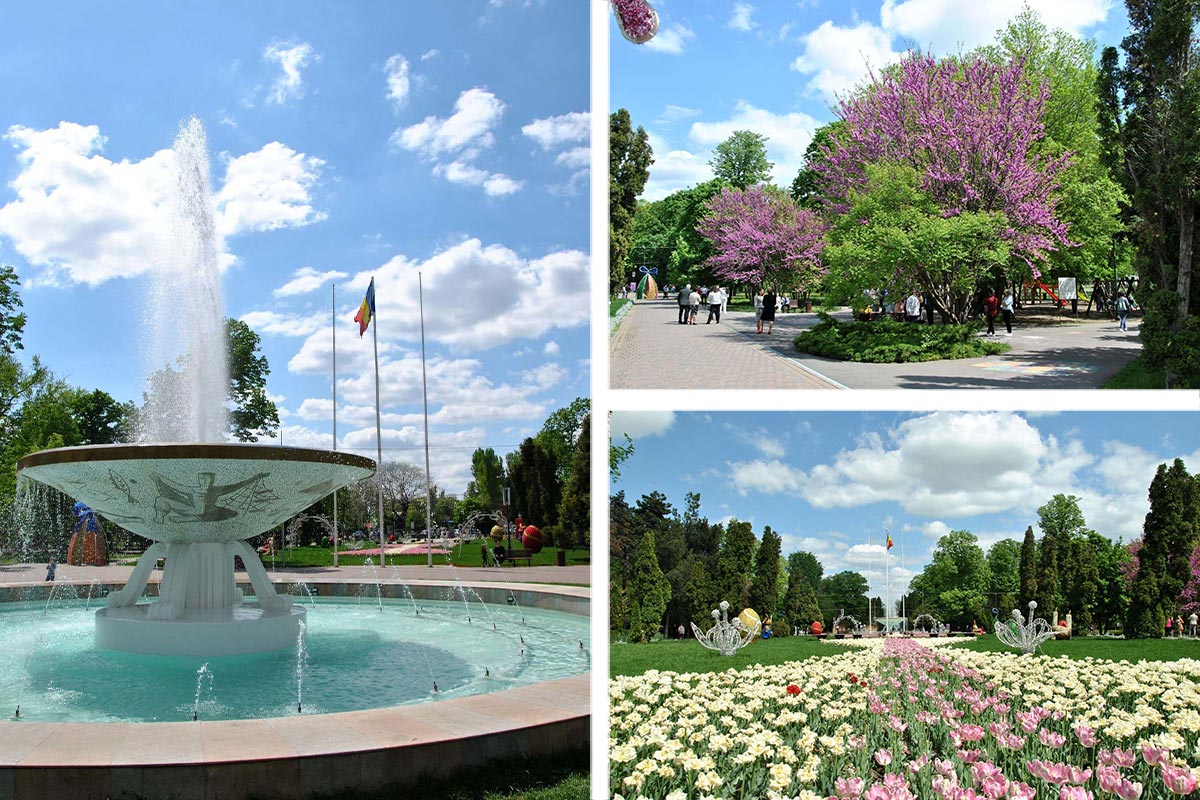
Destinations of the year 2022
(01 May 2022)
X

(01 May 2022)
Galați is a final travel destination in the "Destination of the Year 2022" competition in the "City Break" category.
Galati is the capital of the district of the same name, in the region of Moldova in southeastern Romania.
It was visited by royal families and was one of the richest cities in Romania in the past. Today Galați is a well-known port city and always worth visiting. In addition to the botanical garden, the zoo, many parks and museums, churches and much more, the 2 km walk along the shore offers a wonderful view of places up to 900 meters wide Danube.
Bilder: Public Garden
Inspiration: Destination of the Year
Galati is the capital of the district of the same name, in the region of Moldova in southeastern Romania.
It was visited by royal families and was one of the richest cities in Romania in the past. Today Galați is a well-known port city and always worth visiting. In addition to the botanical garden, the zoo, many parks and museums, churches and much more, the 2 km walk along the shore offers a wonderful view of places up to 900 meters wide Danube.
Bilder: Public Garden
Inspiration: Destination of the Year
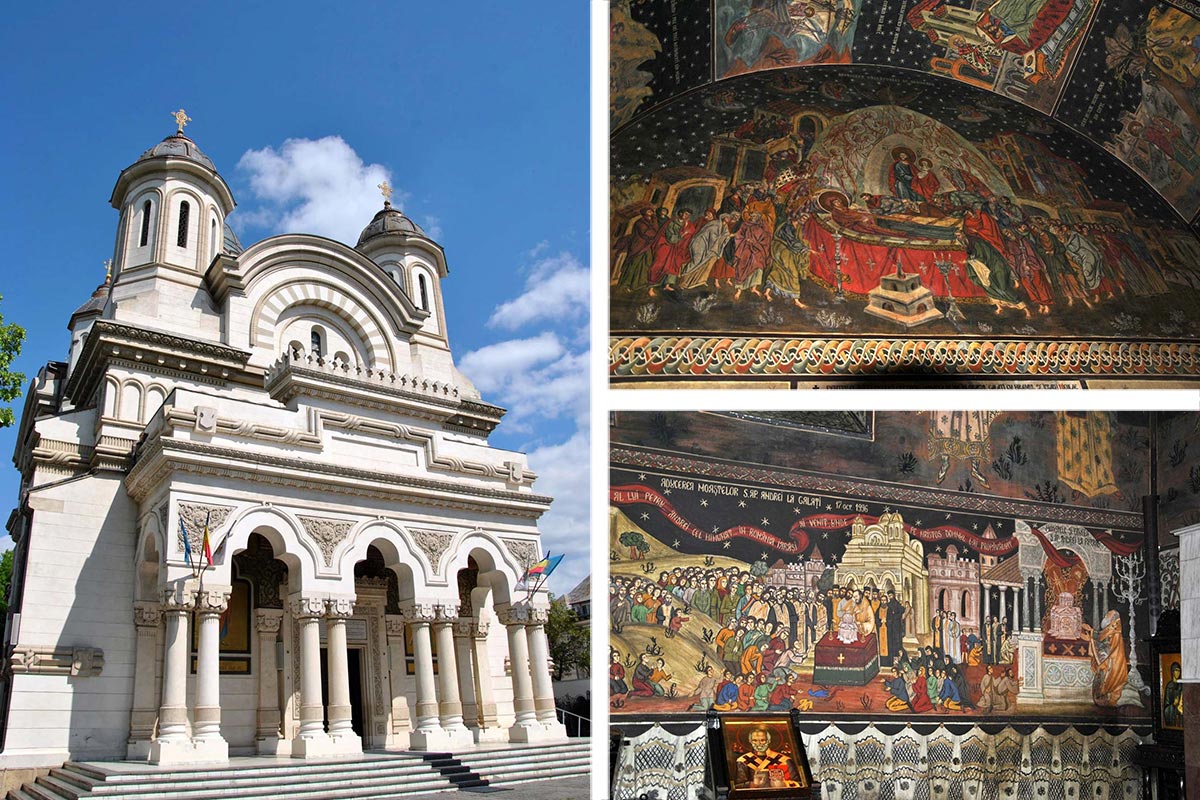
Destinations of the year 2022
(01 May 2022)
X

(01 May 2022)
Galați, is the final destination in the "Destination of the Year 2022" competition in the "City Break" category.
Galaţi is the capital of the district of the same name, in the region of Moldova in southeastern Romania.
It was frequented by royal families and was one of the richest cities in Romania in the past. Today, Galați is a well-known port city and always worth visiting. In addition to the botanical garden, the zoo, many parks and museums, churches and much more, the 2 km promenade offers a wonderful view of the Danube, which is up to 900 meters wide in places.
Images: The Archbishop's Cathedral „St. Andrei ”
Inspiration: Destination of the Year
Galaţi is the capital of the district of the same name, in the region of Moldova in southeastern Romania.
It was frequented by royal families and was one of the richest cities in Romania in the past. Today, Galați is a well-known port city and always worth visiting. In addition to the botanical garden, the zoo, many parks and museums, churches and much more, the 2 km promenade offers a wonderful view of the Danube, which is up to 900 meters wide in places.
Images: The Archbishop's Cathedral „St. Andrei ”
Inspiration: Destination of the Year
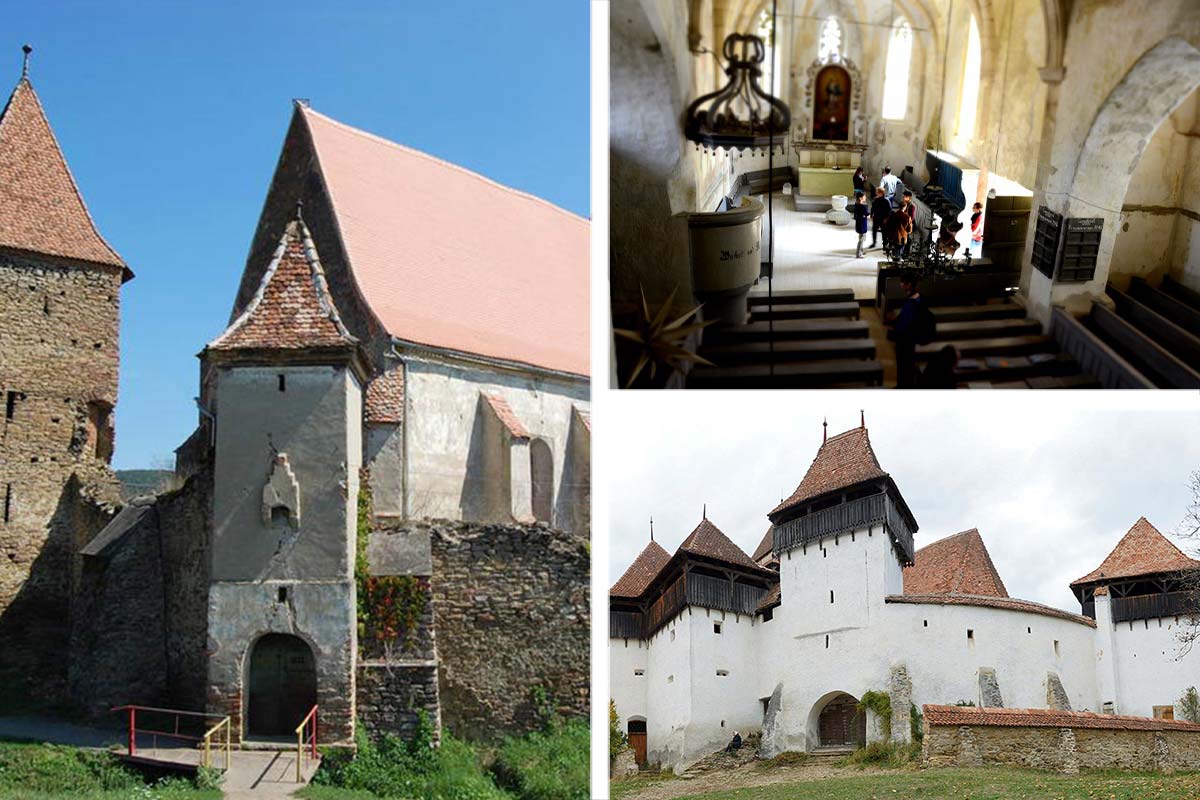
Fortified Churches of Transylvania
(30 January 2022)
X

(30 January 2022)
Specialized tourism, study trips… The Fortified Churches Foundation addresses anyone who is involved in the "issue of the fortified church" in Transylvania (Romania) or who wants to do it in the future - whether they are universities, technical schools. , professional associations or other interested groups and individuals.
Learn more / contact:
https://kirchenburgen.org/aktivitaten/fachtourismus/
Learn more / contact:
https://kirchenburgen.org/aktivitaten/fachtourismus/
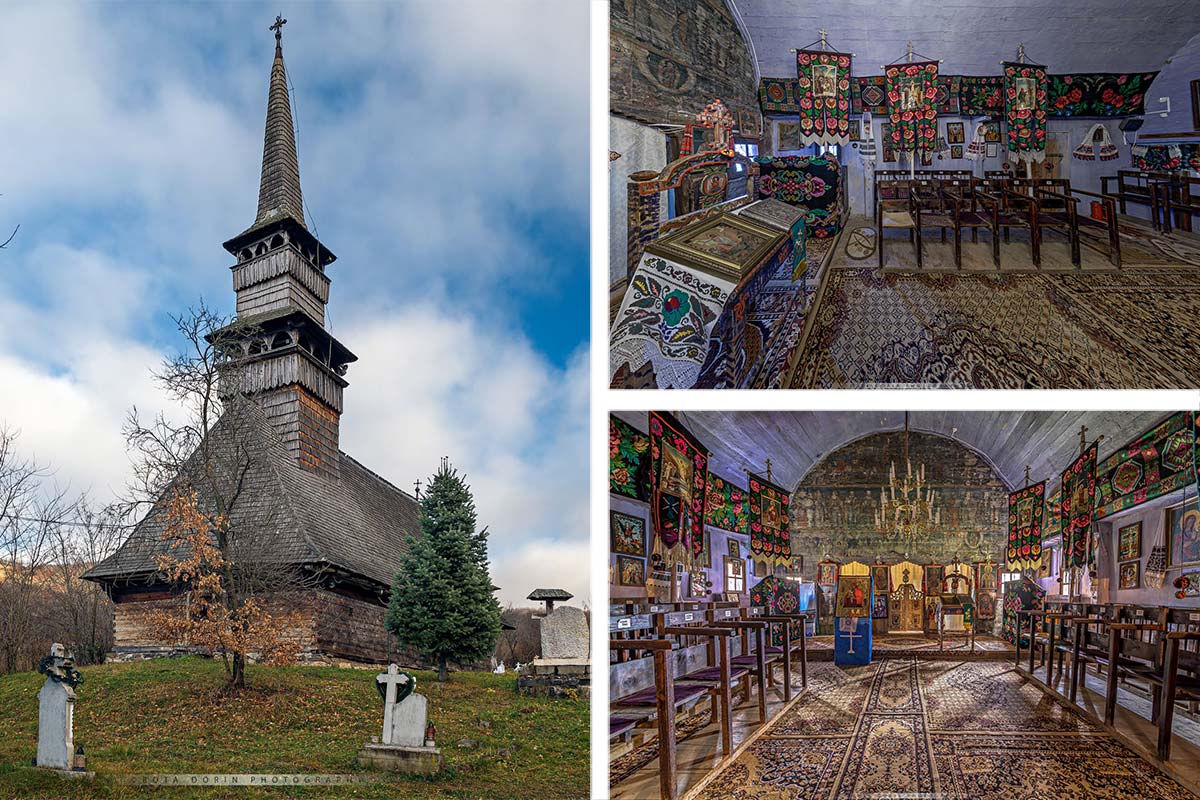
,,Saint Nicholas'' wooden church from the 17th century
(16 December 2021)
X

(16 December 2021)
The wooden church of St. Nicholas (in German St. Nicholas) was built around 1780 and is located in the village of Curechiu, Bucharest in Hunedoara. The church has the most valuable moving heritage of all the wooden churches in Hunedoara, which consists of dozens of priceless wood and glass icons.
We thank Go Hunedoara for the permission to use this image(s)
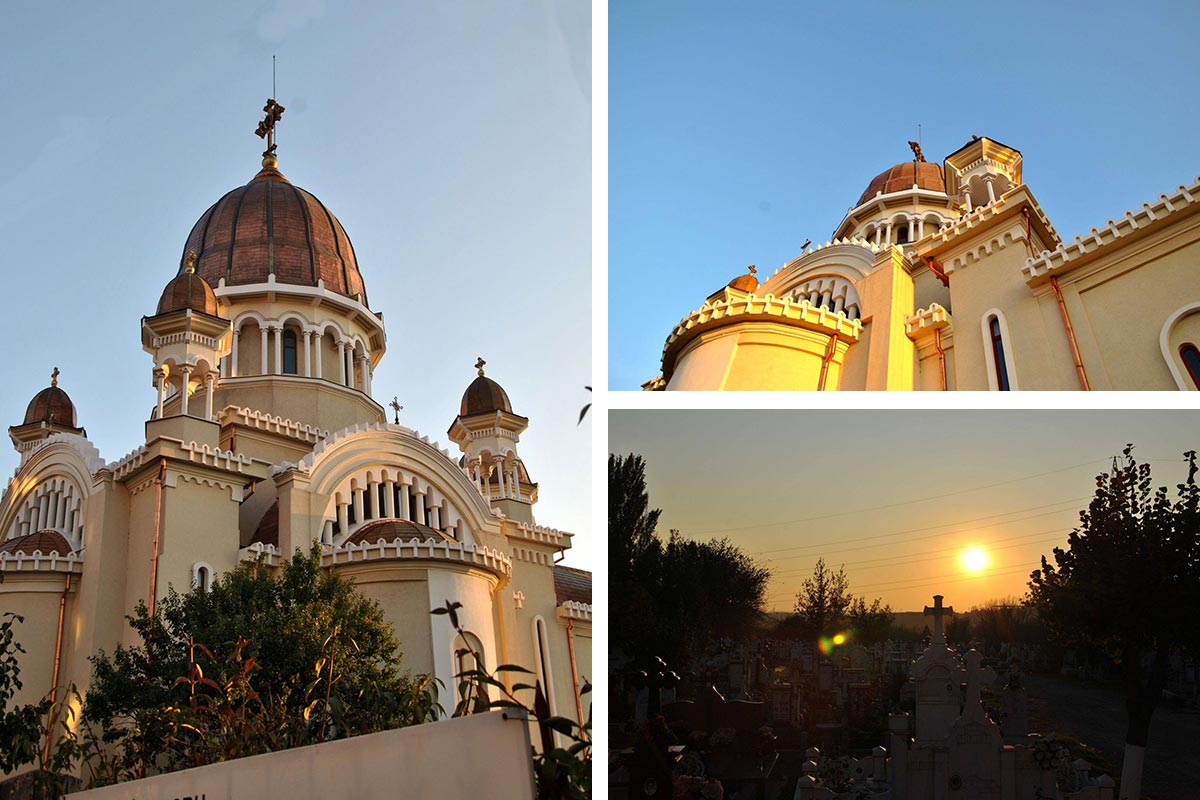
St. Paraschiva at sunset
(22 October 2021)
X

(22 October 2021)
This church (Church of the Holy Pious Parascheva) is located at the entrance to Galati and is one of the largest churches in the city. The image above the entrance shows the "Wonderful Holy Paraskeva" who was born in Epibatai (now Selimpasa, near Istanbul in Turkey), a village in a 10th century Byzantine province and at the age of 15 decided to live a life religious in a monastery and later as a hermit.
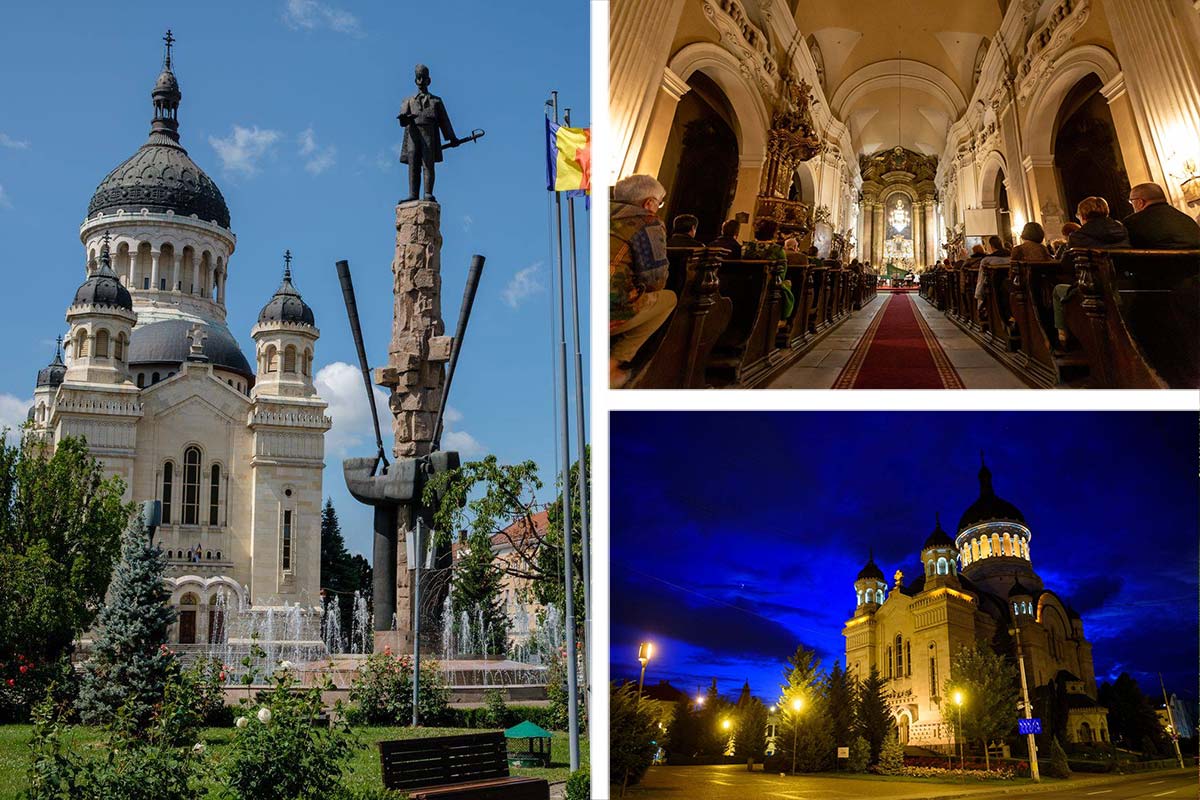
Churches in Cluj Napoca
(21 September 2021)



